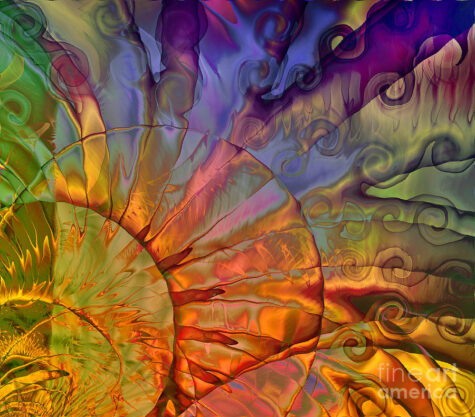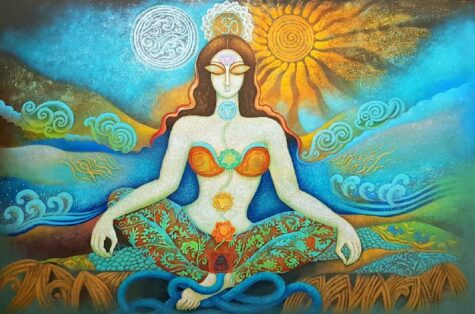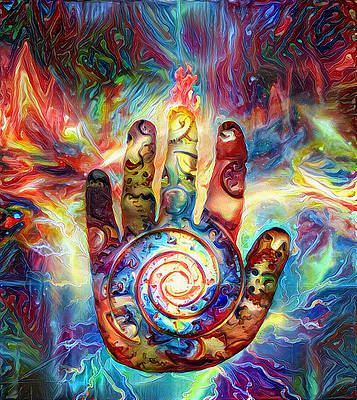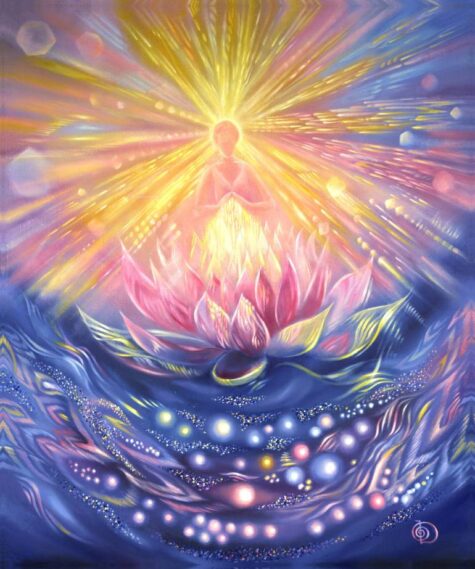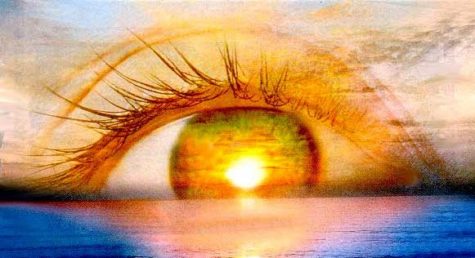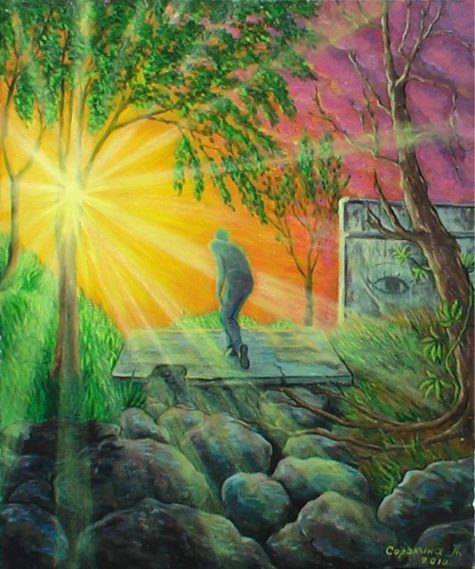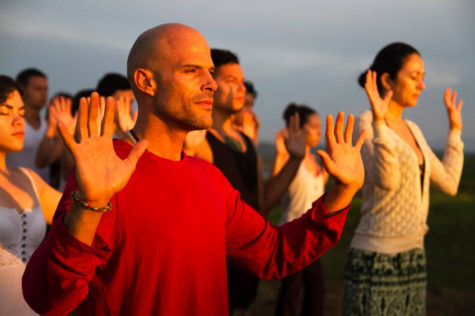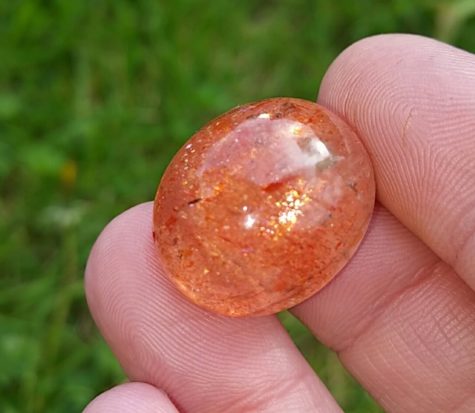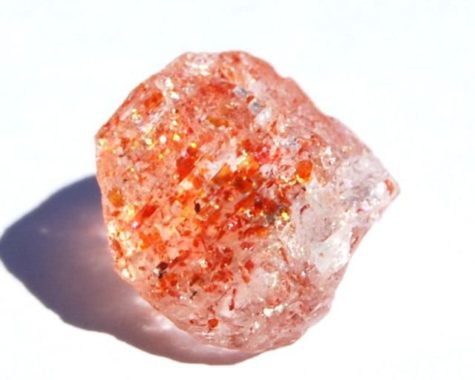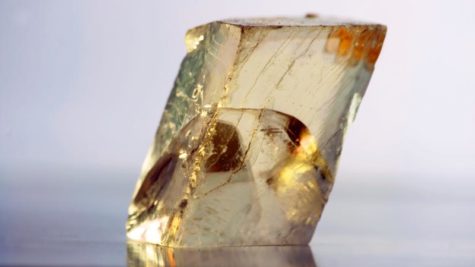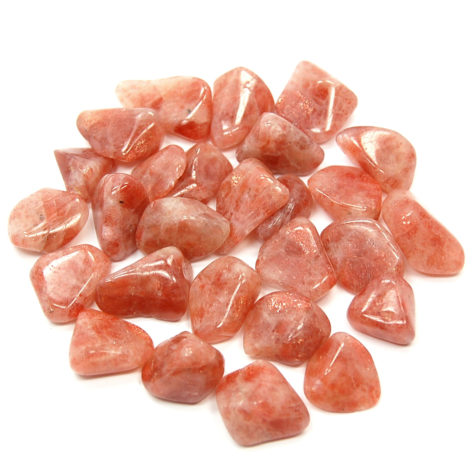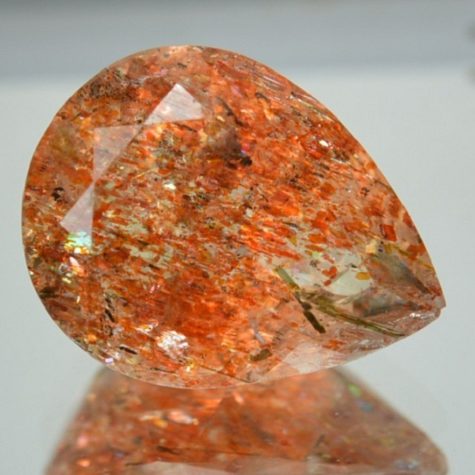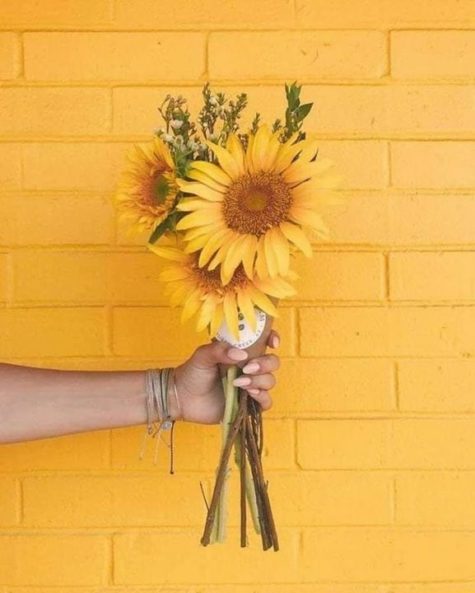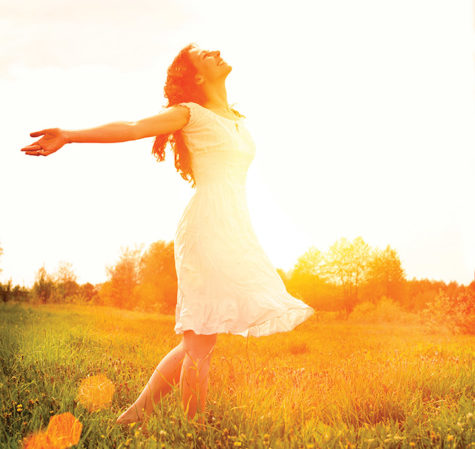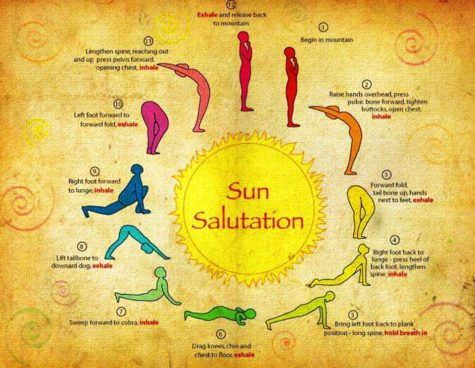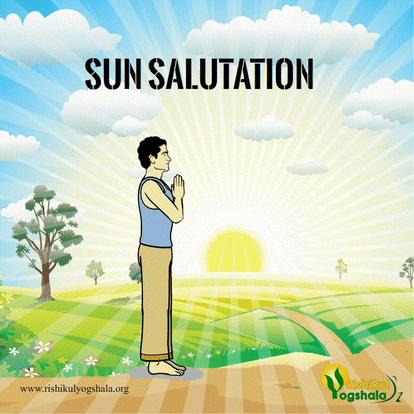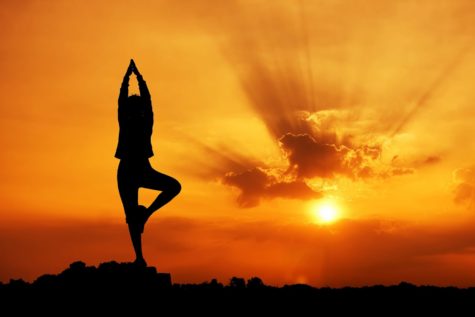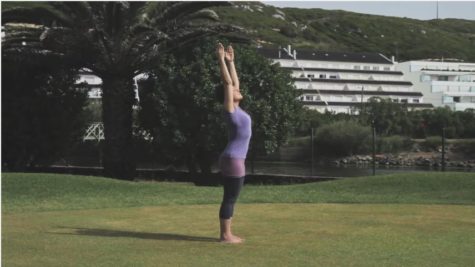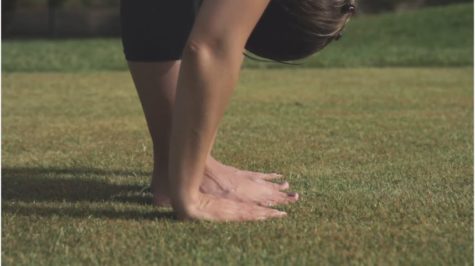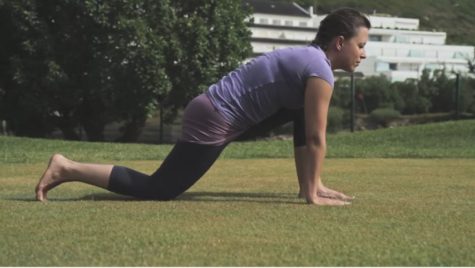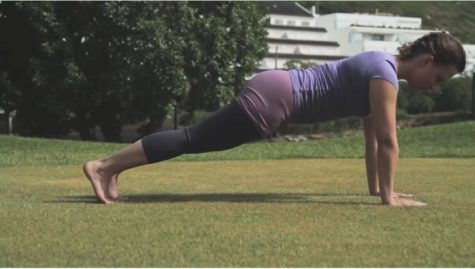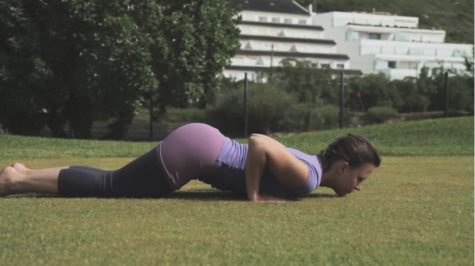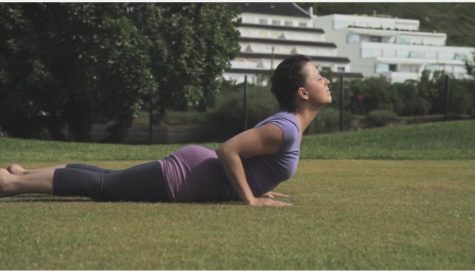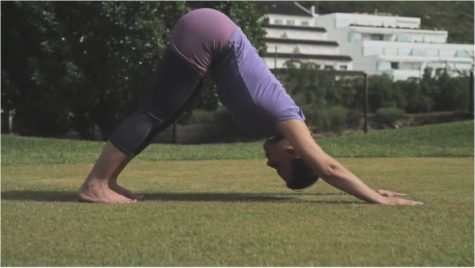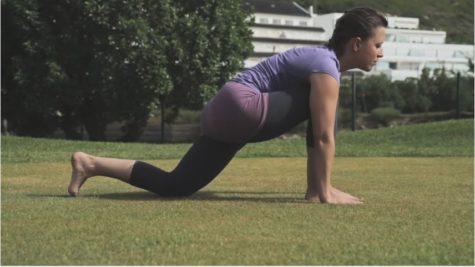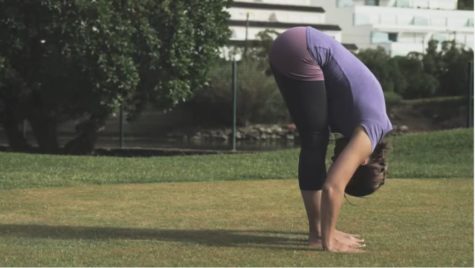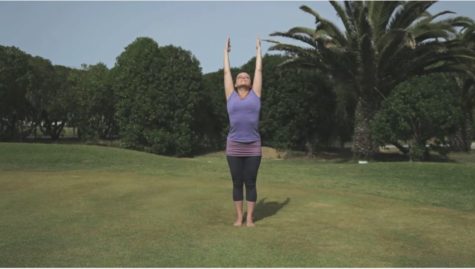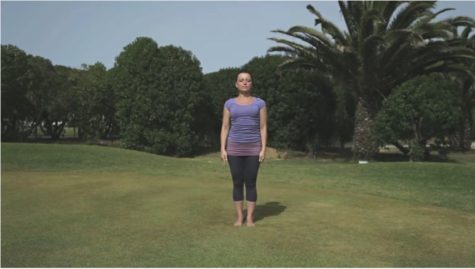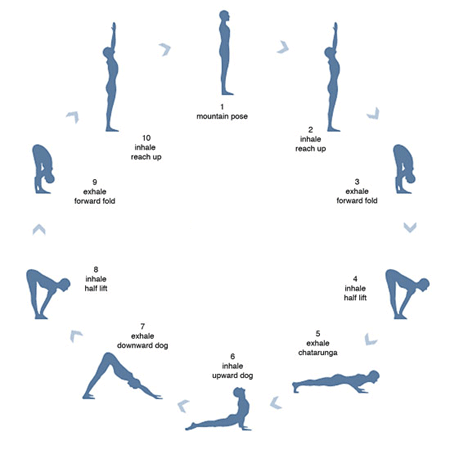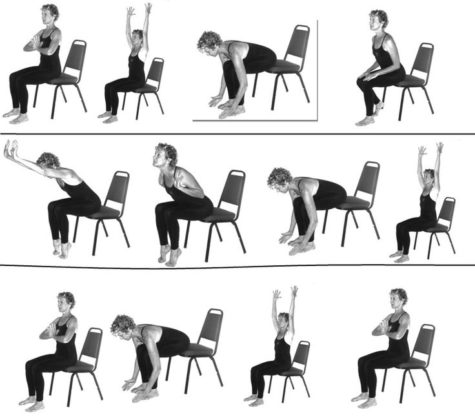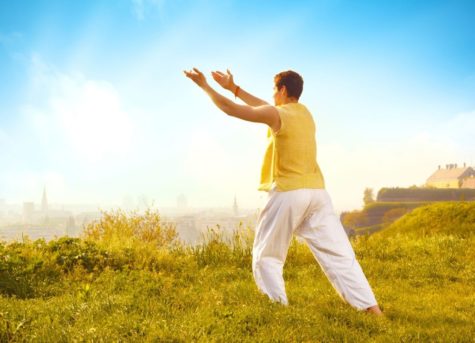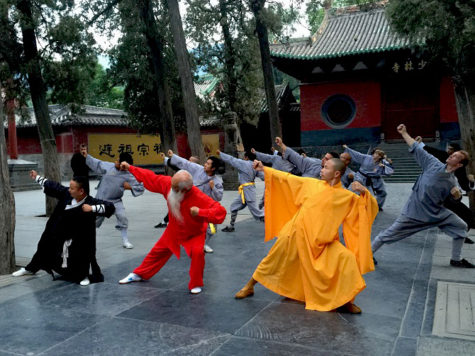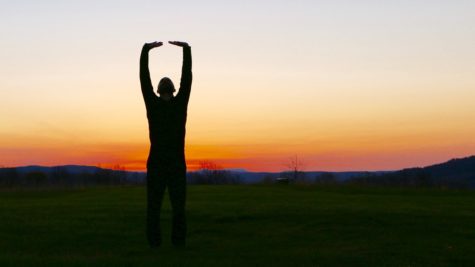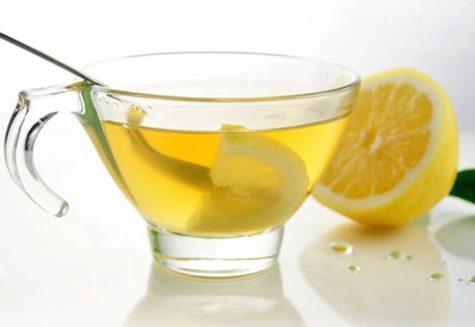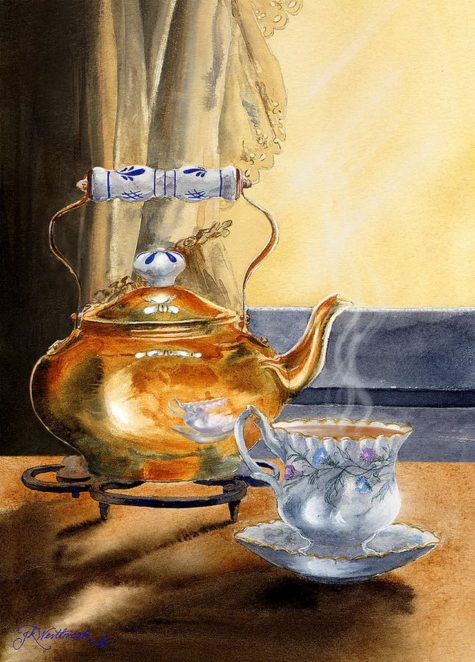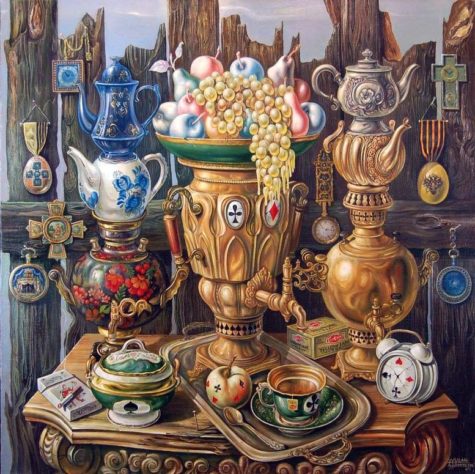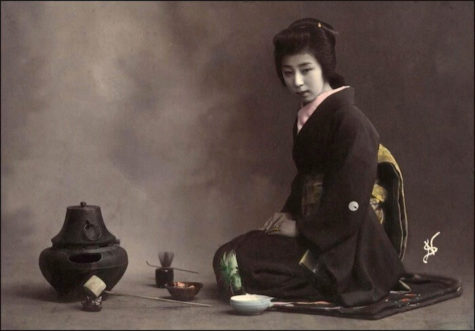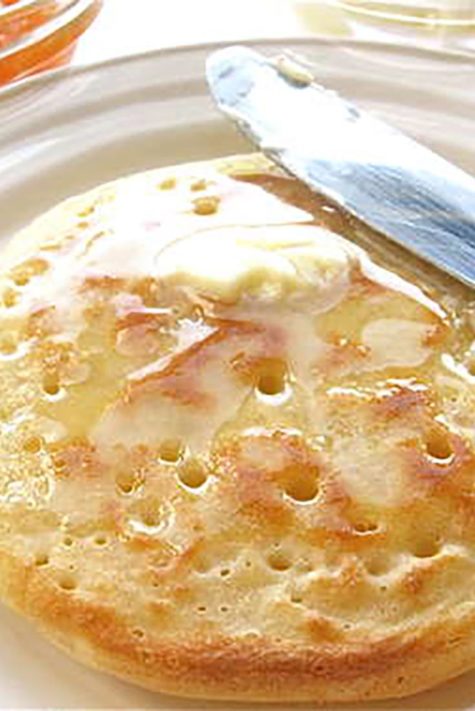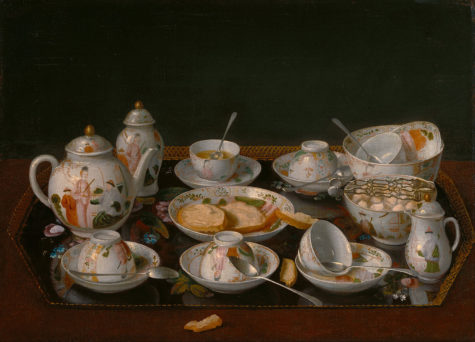Healing
Radical Forgiveness

I forgive myself for everything I ever did
that I thought was wrong.
WOW!
The first time I heard that was on a self hypnosis CD by William Rand. It was such a huge relief to hear it and to own it. I felt immediately freed from a great weight. And even now, whenever I think of it, I have that same feeling of lightening my load.
Yes, I have regrets. Yes, I have my demons and my disasters. Yes, I have made mistakes and engaged in my fair share of messed up stuff. Yes. And yet, right here, right now, I forgive myself for everything I ever did that I thought was wrong.
I don’t have to explain those things. I don’t have to “own” those things. I don’t even have to apologize. I am just giving myself a blanket forgiveness. Feels really good.
You can do this too. Try it!
Enlivening Shakti
Remember way back at the beginning of this project when I was talking about how life is like a garden? If you don’t remember it, here’s a short excerpt:
It occurred to me that time is like a seed, it starts out compressed and organized and then it explodes into something that cannot and will not ever be put back into that tight little package.
This is also a perfect example of how life might work. In the beginning, before we are born, maybe we are just an idea, a tight little package, neatly organized and full of possibilities. And then we get planted. And with the right conditions, just like a seed, our experience of life explodes just a little bit and a tiny root begins to extend out and down looking for nourishment and a home base. At the same time, we begin to extend up and out reaching for possibilities, the larger world. And there’s this huge drive to be more than we are right now, an irresistible push to expand and grow and be everything we can be.
I’m thinking that if life really is like a garden, maybe an infusion of energy, some metaphysical fertilizer, maybe some extra fairy sprinkles might be called for. With that in mind, I found a nice little article over at Yogapedia.com. It’s all about Shakti. Shakti is the power that nurtures the seed and brings it to fruition.
“Shiva and Shakti represent the masculine and feminine energy of the universe. We also have both energies within us, with Shiva being masculine and Shakti being feminine.
Shiva is the space that holds all the wild and wonderful Shakti energy. Every sound vibration in the universe is filled with the creative force of Shakti. Goddess energy is Shakti energy.”
Here’s the article:
Some days I bounce out of bed ready to tackle the day. Other days, it feels like climbing Mount Everest just to get myself to the meditation cushion!
This depends largely on how much general stress I may be under, how well I have eaten the day before, and what depth of sleep I have gotten. Sometimes I feel in the flow, everything clicking along as planned, and sometimes totally out of sync.
What makes the difference?
Everyone has high energy and low energy days, but to get myself balanced and filled with the mojo I need for my day’s activities, I know I need to listen to my body and my spirit, and take steps to address their needs regularly.
There is no shortage of energy in the universe, but sometimes we block its flow into our lives.
However, if we integrate the physical and spiritual aspects of our being through our yoga practice, we can draw upon the boundless energy that is always available to us, particularly shakti energy.
Here is why you need this divine feminine energy and four ways to build more of it in your life.
Why We Want Shakti
Our spiritual nature is a mirror of the Divine in its transcendental aspect as pure being. Our human nature reflects the activating energy of creation manifest in the world, known as shakti.
Shakti is the creative force of the universe and is the feminine principle of divine energy. As a vehicle for universal Consciousness, shakti is often associated humanly with creativity, fertility and change.
In Hinduism, Shakti is represented as the supreme goddess, or Divine Mother. She is the female counterpart to the divine masculine, Shiva. Within us, the qualities of both deities are embodied: the un-manifest potential of pure consciousness and the active creative energy put into manifestation to live our lives.
Other terms for shakti are chitta shakti or atma shakti. Chit and atma are both names for universal Consciousness.
Therefore, the shakti is the pure power moving into form as an extension of source Consciousness that is individually expressed in each of our lives.
Four Ways to Build More Shakti
We are Spirit come into form; so, the more shakti energy we can draw from the field of potential, the more vital and successful our individual lives become.
Most yoga practices help us to do this physically, mentally, or both. Consider these four approaches to building more shakti, or creative power and energy, in your life today.
- 1. Breathe Effectively
The power of shakti can be channeled through conscious breathing. By remembering to breathe slowly and deeply, we immediately begin drawing in more shakti.
Furthermore, techniques such as alternate nostril breathing (nadi shodhana) can increase and balance the movement of energy through the main nadis, or channels, in and around the spine.
To practice nadi shodhana:
Begin by curling your index and middle fingers into your palm.
Close the right nostril with your thumb.
Inhale through the left nostril.
Then close the left nostril with your ring finger and exhale through the right nostril.
Inhale again through the right.
Close the right nostril with your thumb and exhale through the left.
Inhale left, close, exhale right.
Inhale right, close, exhale left.
Keep up this pattern of changing the closure on the exhalation for several more minutes.
This is alternate nostril breath and, with consistent practice, it will regulate the shakti and you will be able to breathe more fully and clearly.
- 2. Stop the Energy Drains
Take stock of the energy expenditures in your life. Are you giving too much time and focus to work and not enough to exercise or creative pursuits? Are you worrying constantly rather than asking for help or trusting the flow of life? Are you ruminating over some past hurt, resentment or lost love?
Energy drains come in many forms. They are especially apparent when we are not practicing self-control in the ways we know we should. They zap our shakti and deplete our power of creation in the here and now. Over time, they can cause illness and severe fatigue. Where do you need to stop the energy drain?
Consider taking a day in silence to get recalibrated or doing more activities such as eating meals in silence. Talking all the time or being around others talking can drain us. Silence is healing for the soul. If we can combine silence with being in nature, it is even more powerful.
The shakti of Mother Earth replenishes us through sunlight, fresh air and the powerful sense of being at one with the natural elements.
- 3. Maintain a Virtuous Lifestyle
When we think of a healthy lifestyle, obviously there are the minimum requirements, such as the right amount of water, balanced nutrition, proper physical movement and rest. However, at a deeper level of health, “The Yoga Sutras of Patanjali” recommend internal as well as external practices that put us into a state of harmony and virtue.
Ultimately, true power is created through the alchemy of living in integrity, wisdom and humility. A healthy lifestyle is one that encompasses right action inwardly and outwardly. This would include practicing peacefulness, generosity, self-control, contentment, introspection and devotion.
Engaging some self-reflection can illuminate an aspect of your health that needs a tune-up at this time. Are you avoiding some truth you know you need to face? Are you taking reflective time to listen to your inner wisdom and be self-honoring? Are you allowing unbridled desires to drive your choices in an unhealthy way?
- 4. Develop a Spiritual Practice
Most of every day is spent developing our material lives — our careers, hobbies, physiques, etc. — but, for true success, we need to develop our spiritual lives as well. In the same way that a slow, gentle Yin yoga class can balance our bodies when we are feeling a lot of strong yang energy, our spiritual practice balances our ability to receive as well as to do.
To access an understanding and experience of your spiritual nature, many different practices can be used. Silent reflection, prayer, mantra repetition and devotional chanting are all ways that we can draw closer in our hearts to the connection we have with the divine Spirit.
These techniques help prepare us for sitting in the stillness of meditation through which we can cross the bridge from human awareness to spiritual awareness. In this unified state, the shakti of creation merges back into the universal Consciousness and we experience true Self once again.
Try This Shakti Visualization
To practice awakening your Shakti, practice bringing your attention to your body and to your world. Now visualize that everything in your awareness — everything you see, feel, sense, both inside and out — is made up of the goddess energy.
See everything as a manifestation of this divine feminine Shakti. Take a deep breath and imagine that the air you breathe sparkles with Shakti.
Your lungs are filled with the eternal vibration of Shakti. Even your mind is filled with shining particles of Shakti energy. In essence, the goddess is everything.
Source: Yogapedia.com
Sun Gazing
SunGazing was a popular practice in ancient times. Mayans, ancient Egyptians, Indians and many other ancient cultures strongly believed in the power of Sun. They believed that it could heal diseases, put an end the need of food, and even make telepathy a real possibility.
The practice of SunGazing closely resembles its name. At sunrise and/or sunset, when the sun is closest to the earth, SunGazers stand barefoot on the earth and look directly at the sun for 10 seconds. Every day, 10 seconds are added and some SunGazers eventually reach a duration of 44 minutes.
The theory is that the sun is the force of all life, and staring at it can infuse the body with large amounts of energy. So much so that, Hira Ratan Manek, one of the SunGazers featured in the documentary, Eat the Sun, claims to have gone eight years without eating. He has been “eating” a steady diet of solar rays, and claims that this is all he needs for nourishment.
It may sound like a myth, but some scientists, have acknowledged the power of SunGazing. Nikola Tesla once talked about these super human abilities. He said,
‘My idea is that the development of life must lead to forms of existence that will be possible without nourishment and which will not be shackled by consequent limitations. Why should a living being not be able to obtain all the energy it needs for the performance of its life functions from the environment, instead of through consumption of food, and transforming, by a complicated process, the energy of chemical combinations into life-sustaining energy?’
Our ancestors understood the relation between the sun and health. From the Aztecs to the ancient Egyptians, many past societies revered SunGazing as an esoteric practice for high-ranking priests and shamans. Today, it is experiencing a resurgence in popularity and SunGazers claim it has its benefits.
The benefits of the practice are said to be as follows:
- It activates our pineal gland and boosts production of melatonin and serotonin which are also called feel-good hormones. The hormones are also supposed to be the reason behind the increased energy level.
- It is known to stimulate the growth of pineal gland. Generally pineal glands shrink with age, but with SunGazing, the result is otherwise.
- SunGazing provides nutrition to both mind and body which provides for our energy requirement. Hence, human can get rid of the need to eat food which promotes weight loss in a healthy way.
Sungazing is an interesting practice that touches the spiritual and psychological realms, which are very personal things. Everyone is wired a little differently and this practice isn’t for everyone, nor is it something I recommend. If you choose to partake, do your own research, be careful, be cautious, and document your experience.
Important Disclaimer:
The human eye is very sensitive, and prolonged exposure to direct sunlight can lead to solar retinopathy, pterygium,cataracts,and often blindness. Studies have shown that even when viewing a solar eclipse the eye can still be exposed to harmful levels of ultraviolet radiation.
SunGazing With Your Eyes Closed
The practice of SunGazing with your eyes closed is actually more powerful than SunGazing with your eyes open and can be done safely all day long. With them closed, the visible light spectrum is blocked but the other than visible light spectrum penetrates the cranium – x-rays, gamma rays, microwaves etc.
The after image which is present when you SunGaze or stare at a candle or light source, is actually the biophotons in your head illuminating. Biophotons are very healing – that is why they discredit that after image and refer to it like it is a mirage, and just to be ignored.
The biophotons react to other than visible light – the light that penetrates the cranium when your eyes are closed and you look at the sun. Biophotons will expand and fill the entire cranium and then the whole body, as you focus on the inner Light, that Light becomes more coherent.
The coherent light is a more potent healer than anything else we have on earth. Illness and disease cannot exist inside a coherent energy field. There are 13 different LIGHTS inside the head – corresponding to Jesus and the 12 disciples – these are the Light frequencies required to cleanse and purify the Pranic body – the 2nd body up – not to be confused with the aura – to accomplish ascension – the Jesus thing.
But Wait, There’s More!
I found another article about SunGazing that I thought was interesting and worth a look if this interests you. The article was written by Stasia Bliss for The Guardian Express (guardianlv.com):
NASA Confirms -Super Human Abilities Gained Through Sungazing
Ever wanted to be in more than one place at a time? That’s right, I’m talking about the super-human abilities that can be gained by those who follow the protocol for what’s known as sun-gazing, a valid practice recently confirmed by NASA.
Many proponents of this ancient technique, used by many cultures such as Mayan, Egyptian, Aztec, Tibetan and Indian yoga, report not only healing benefits to common illnesses, but obtaining super-human abilities such as advanced telepathy and going completely without the need for food.
Another Disclaimer: Do not engage in sungazing practices without proper training and medical supervision. Permanent eye injury and blindness may occur. Do not attempt to change your diet and live on sunlight or water alone. Before attempting any radical spiritual or dietary practice, seek qualified medical advice and spiritual supervision.
What is Sun Gazing?
Sun gazing (also known as sun-eating) is a strict practice of gradually introducing sunlight into your eyes at the lowest ultraviolet-index times of day – sunrise and sunset. Those who teach the practice say there are several rules to the practice. First, it must be done within the hour after sunrise or before sunset to avoid damaging the eyes. It is important to only look at the sun when it is orange or red according to the ancients. Looking at the sun when it is yellow or white, or uncomfortable in any way is not recommended.
Second, you must be barefoot, in contact with the actual earth – sand, dirt or mud; and finally, you must begin with only 10 seconds the first day, increasing by 10 second intervals each day you practice. Following these rules make the practice safe, says sources.
Nikolai Dolgoruky of the Ukraine calls himself a ‘sun-eater’. He has been practicing sun gazing for the past 12 years and has largely subsisted off solar energy since he began. Others have reported losing the need for food after only 9 months of sun gazing (by which time the practitioner has worked up to a maximum of 44 minutes).
After 9 months of practice, you need only walk barefoot on the earth for 45 minutes per day, 6 days in a row to further the process of what has been initiated by sun gazing.
Sun-gazing is a practice also called the HRM phenomenom, coined as such after Hira Ratan Manek, the man who submitted himself to NASA for scientific testing to confirm that he does indeed possess the almost ‘super-human’ ability of not eating, gained through his dedication to this interesting marvel.
Funded by NASA, a team of medical doctors at the University of Pennsylvania observed Hira 24 hours a day, 7 days a week for 100 days. NASA confirmed that he was indeed able to survive largely on light with occasionally a small amount of buttermilk or water during this time.
What happens to the body during Sun Gazing?
During your first 3 months of practice, the suns energy is moving through the eyes and charging the hypothalamus tract, says those who have studied this technique and used it. This Science/Medical Team wanted to observe and examine his retina, pineal gland and brain, therefore this observation team was led by Dr. Andrew B. Newberg, a leading authority on the brain and also featured in the recent movie “What the Bleep Do We Know”, and by Dr. George C. Brenard, the leading authority on the pineal gland.
Initial results found that the gray cells in HRM’s brain are regenerating. 700 photographs have been taken where the neurons were reported to be active and not dying. Furthermore, the pineal gland was expanding and not shrinking which is typically what happens after mid fifties and its maximum average size is about 6 x 6 mm, however for HRM, it has been measured to be at 8 x 11 mm. The hypothalamus tract is the pathway to the rear of the retina which leads to the brain.
The brain then, over time, becomes activated by the energy supply being received by the sun. You will first experience a relief of mental tension and worry, since most worry is fueled by the energy received by the foods we eat. Since food gets it’s energy from the sun, it is said to be readily available to sun-eaters without the trouble of digestion. Though hunger is said to eventually cease, it is fine to continue eating regularly during initial stages, until appetite disappears naturally.
Another benefit early on is said to be an increase in confidence and an ability to easily solve your problems, as you are without tension. Everyone has at least a bit of psychosis, but during the first few months of sun gazing practice, it is reported that these attitudes go away and a positive nature gracefully replaces the old persona full of fears.
By the end of 3 months, the gazing time will have increased to 15 minutes per day.
Reports on sun gazing say that the bad qualities normally associated with any person will gradually disappear and good qualities will remain, explaining that ‘bad qualities’ only develop in the absence of sunlight. Bad qualities like anger, fear, jealousy, lust – are said to disappear – and be replaced by a certain confidence and ‘spiritual knowing’ that senses more purely the heart of an issue.
At 3-6 months of gazing, the studies show that physical diseases start to disappear.
They say that by the time one is gazing 30 minutes per day (building up 10 seconds per day) all the colors of the sun will have reached the brain. Color therapists attribute their healing of certain diseases to flooding the body and brain with the particular color that is lacking – depending on the ailment.
For example, in liver disease, the color green is deficient. The kidneys need red, and the heart, yellow. All of the organs and all of the systems are said to respond to different colors of the rainbow, which is why it is also recommended to eat a diet rich in a variety of colors. It is recommended during the 3-4 month period that you use autosuggestion to see your body already healed of any perceived weakness or disease.
This action will facilitate the process of returning to wholeness.
As you continue the process, it is reported that after 6 months, the energy stored from the technique is no longer being used for repairing the body or the mind and can move now into supporting you in gaining more super-human abilities.
How can we take in sunlight?
How can the body take in sunlight in such a manner as to sustain life? Is it possible that some of our dormant “junk” DNA may become active and allow us to utilize Solar Energetic Factors in the same way that plants do? Let us examine a possible method.
There is a pathway from the retina, to the hypothalamus, called the retino-hypothalamic tract. This brings information about the dark &light cycles to supra-chiasmatic nucleus (SCN) of the hypothalamus. From the SCN, impulses along the nerve travel via the pineal nerve (Sympathetic nervous system) to the pineal gland. These impulses inhibit the production of melatonin. When these impulses stop (at night or in dark, when the light no longer stimulates the hypothalamus) pineal inhibition ceases, and melatonin is released. The pineal gland is therefore a photosensitive organ and an important timekeeper for the human body.
The unexplored process of energy absorption, transformation, and processing from the Sun may occur here. The activation of pineal gland is a key step in psychic, spiritual and energy transformation processes. Suffice it to say that in this gland, energy processing and distribution can take place. The pineal gland is the subtle controller of all endocrine glands, therefore controlling the endocrine system. Through secretion of melatonin, it also regulates the circadian rhythm, sleep wake cycle and it also slows down aging process. It has psychic properties and it is said to be the seat of soul or mind.
Sunlight may enter the eyes and be directly stored in the pineal gland. Pineal activation and charging through solar energy could be a vital step in higher evolution. Once activated and charged by the Pineal gland, Solar Energetic factors may be transformed into electrical, magnetic or chemical energies in body. Once processed, this energy must be transported & must be stored somewhere. If the initial processing of this energy starts in the pineal gland, how does it get to the rest of the body?
What’s Beyond Healing?
By seven and a half months of gazing, now at 35 minutes, need and desire for food is dwindling. According to sun gazing experts, food is not actually needed to maintain the body, only energy – and ‘sun-eating’ provides that energy. By 9 months, all taste for food, including aroma, all hunger pains and cravings disappear. Those who make it this far say that they report a noticeable ’change’ in the way their brain feels – like it’s “charged up.” After 9 months of sun-gazing – reaching a maximum of 44 minutes – it is advised that you give up sun-gazing and redirect your attention now to the Earth.
For 6 days straight, one is to walk barefoot on the earth, 45 minutes per day.
During this barefoot walking, the pineal gland is said to become activated. Professional sun gazers and those researching the science say that each toe is connected to a specific gland, and by walking barefoot on the Earth, you activate these glands. The big toe is thought to be aligned with the pineal gland, the second toe with the pituitary, then the hypothalamus, thalamus and finally the pinky toe correlates to the amygdala. Walking barefoot, with the sun now falling on the top of your head, practitioners claim to create a sort of magnetic field in and around your body that recharges you and your brain.
Apparently this walking barefoot part is the most important aspect of the practice. As you continue walking on the Earth, this is when the magic really begins. The pineal gland is activated more and more by this walking procedure. Intellect is said to increase, along with memory. The pineal gland has navigational and psychic capabilities, meaning telepathy, the possibility of flight… now we are getting somewhere! Have you ever thought you would like to have your body in more than one place at a time? Well, sun-gazing is said to be the magical key to such abilities.
If you can barefoot walk 45 minutes every day for a year – you are golden. At that point, only a maintenance of 3-4 days a week is necessary to maintain the capabilities you have acquired.
Are there any dangers?
Doctors and eye care professionals caution against looking directly at the sun, saying that it will damage the retina. However, if done correctly, sun-gazing at the correct times of day, sunrise and sunset, studies show there is no risk of damaging the eyes.
Those who have been sun gazing for many years have had their eyes checked to show no damage, though it is advised that you have your eyes checked in the first few weeks of your practice, so you can know for yourself.
To sum it all up…
Remember, it’s 10 seconds the first day, at sunrise or sunset, adding 10 seconds per day each day there after. After 90 days of accumulative gazing equaling 44 minutes, you cease the gazing and start the barefoot walking 45 minutes per day for 6 days. At this point, I could imagine, hey – if you made it this far, what’s a year of barefoot walking an hour per day to keep it all? You will have to try it out and see for yourself.
Sources:
Sun Stones
“I am proud of who I am,” is the affirmation of Sunstone, a crystal known to help us find our joy, harmony and happiness after a dark time. Its properties of vitality and empowerment are particularly beneficial for those under the signs of Leo and Libra, both of whom rely on their good humor and ability to find joy in life. Sunstone’s primary chakra is the Root Chakra, connected to our basic needs and establishing our foundation.
Giving off a bright and cheery glow of good vibes, the Sunstone crystal is the perfect sunblock to protect a sensitive spirit from our toxic and imperfect world. Like a strong SPF for the spirit, it wards off negativity while allowing you to bask in the glow of its mighty sunbeams. Call on the Sunstone crystal meaning during your darkest hour and get a deep spiritual tan when you take a vacation from the daily stress of everyday life.
A member of an extensive group of minerals known as feldspars, the Sunstone crystal warms up the chakras and gives you a lovely sun-kissed glow in the middle of an emotional winter. By stimulating the sacral chakra, Sunstone brings a flood of light into dark corners of the mind, making it an excellent healing aid for clearing away negative thought patterns. Like the ancient Buddhist proverb says, we are what we think, so if you’re in a grumpy mood, snap out of it with the bright and sunny Sunstone crystal stone, the best antidepressant in the world of gemstones.
Expand the mind to a higher consciousness when you incorporate Sunstone crystal healing properties into your daily wellness routine. Every morning when the sun rises and offers the gift of a new day, let the Sunstone be your daily dose of Vitamin C for the spirit. By bolstering a sense of self worth and confidence, Sunstone is your healing prescription for a case of the blues.
Bring an instant ray of sunshine into your life when you incorporate the Sunstone crystal stone meaning into your daily meditation practice. Step away from the TV remote, Instagram, and anything else that might distract you and enter a sacred space that encourages quiet introspection and solitude. Even better, take your therapeutic session outside and witness the soles of your feet rooting to the energy of the earth. Tell the crystal your intention by declaring out loud a set of empowering mantras that reconnect you with the healing rhythm of nature.
Possessing energy as bright and cheery as its vibrant aesthetic, the Sunstone crystal meaning is linked with the playful whimsy of childhood. While maintaining the daily stress of adulting in the modern world, Sunstone reminds us to keep a healthy balance between career demands and fun in the sun.
First discovered in Norway, the Sunstone crystal is linked with ancient Norse texts that reference the Vikings using it to navigate the seas. Thanks to tiny particles of Hematite, Sunstone gets it distinctive shimmer from light-reflecting properties, which these famous seafarers used to catch rays of light from the sun, the undisputed GPS of Mother Nature.
Call on the Sunstone crystal meaning and learn how to make peace with your past mistakes. After all, it’s our imperfections that help us grow and transform. Wherever you happen to be on your spiritual journey, hold the Sunstone crystal in your hand and give yourself permission to love yourself unconditionally, letting go of painful memories of the past and moving forward, just like the sun rises and sets in the never-ending cycle of night and day.
When it comes to its vibrant aesthetic, Sunstone is as dazzling as its namesake. It gets its distinctive shimmery finish from aventurescence, which is caused by tiny prisms of red copper or hematite. Always feel the invigorating vibes of cheery Sunstone by wearing it on a necklace. Its intense orange color reflects its link to the Sun, its ruling celestial object, and also its power to brighten up and clear away clouds of pessimism.
As an all-around chakra cleanser, Sunstone is an essential addition to healing grids because it clears and activates all energy pathways, helping increase the power of the other stones. If you lack a sense of sweetness in your life, it’s time to call on Sunstone crystal healing properties to evoke the notion of joie de vivre. Following the spirit of the time-honored proverb, Sunstone crystal healing properties gives you the guidance to turn your face towards the sun, letting the shadows fall behind you. Sunstone is a shining light of optimism, your celestial lighthouse that you can always count on to guide you to safety.
Reflecting the same color as the marigold flower, Sunstone properties give jewelry a warming effect by harnessing the power of the sun and its ability to strengthen the spirits. If you yearn for the healing effects of the sun, heat things up with Sunstone, an easy remedy for seasonal affective disorder and garden-variety depression. Like a fire always burning bright, Sunstone is your spiritual hot chocolate, which is perfect for warming up the chakras and opening up your heart to love and its incredible healing and transformative effects.
The color of the Sun and its life-giving energy, Sunstone symbolizes hopefulness because even the darkest night will give way to a rising sun.
Sunstone Meditation
Sunstone meditation can help you feel the powers of the sun and light. With Sunstone’s light, it can help clear and energize your chakras.
- Here is the meditation:
Hold a Sunstone in each hand, palms open. Close your eyes and breathe complete breaths. Breathe in and out, slowing your breath. Imagine that you are a bright light, and that your hands, arms, head, and neck glow with the brightness of this light. Envision the light expanding and covering everything abundantly. Feel the warmth of your skin as it glows and spreads the light. Feel the warmness of the light as it heals your mind, body, and spirit.
Sources:
- Energy Muse
- Astrology Answers
- Strong With Purpose
- More Sunstone information posted over at Magickal Ingredients.
All About Yellow
Yellow is the color of sunlight and as such is a cheerful and happy color. Yellow expresses the need for constant stimulation and activity. It is an inspiring and expressive color which expands the mind and the capacity to understand. Yellow is associated with the mentally adventurous. It is the color of the solar plexus chakra.
Yellow is the color of gold, butter, and ripe lemons. Yellow is commonly associated with gold, wealth, sunshine, reason, happiness, optimism and pleasure, but also with cowardice, envy, jealousy and betrayal. It plays an important part in Asian culture, particularly in China.
Yellow enriches, stimulates, lightens and activates many of the systems of the body. It tends to encourage orderliness and clarity. It can act as a mild sedative to relieve many fears and give a mental lift. Gradual and consistent exposure to yellow light decreases blood pressure and heart rate and increases energy and endurance.
Yellow is the color of the mind and the intellect, vitality, power and ego. It is optimistic and cheerful, however it can also suggest impatience, criticism, and cowardice.
Yellow links with and stimulates the solar plexus, or psychic center (the third chakra). It can be used for psychic burnout or other psychic-related conditions or ailments. Activates and cheers up depressed and melancholic people. Gives lust for life.
Yellow is a very favorable vibration for mental or intellectual activity, as it promotes a clear state of mind. Yellow heightens your awareness and alleviates depression, sadness, or any kind of despondency. When studying, having objects of lemon yellow around will help the memory functions of the brain. If exam-stress is a problem, a bright golden yellow encourages relaxation and reduces nervousness.
More About The Color Yellow
The word “yellow” comes from the Old English geolu, geolwe, meaning “yellow, yellowish”, derived from the Proto-Germanic word gelwaz. It has the same Indo-European base, –ghel, as the word yell; –ghel means both bright and gleaming, and to cry out. Yellow is a color which cries out for attention.
The English term is related to other Germanic words for yellow, namely Scots yella, East Frisian jeel, West Frisian giel, Dutch geel, German gelb, and Swedish gul.
According to the Oxford English Dictionary, the oldest known use of this word in English is from The Epinal Glossary in the year 700.
In Ancient Egypt, yellow was associated with gold, which was considered to be imperishable, eternal and indestructible. The skin and bones of the gods were believed to be made of gold.
The Egyptians used yellow extensively in tomb paintings; they usually used either yellow ochre or the brilliant orpiment, though it was made of arsenic and was highly toxic. A small paintbox with orpiment pigment was found in the tomb of King Tutankhamun. Men were always shown with brown faces, women with yellow ochre or gold faces.
Seeing Yellow
Although yellow occupies one-twentieth of the spectrum, it is the brightest color, the most luminous of all the colors. It’s the color that captures our attention more than any other color.
In the natural world, yellow is the color of sunflowers and daffodils, egg yolks and lemons, canaries and bees. In our contemporary human-made world, yellow is the color of Sponge Bob, the Tour de France winner’s jersey, happy faces, post its, and signs that alert us to danger or caution.
Wearing Yellow
Wear yellow to present a cheery, uplifting effect. Use it around your office to help keep a clear your mind, and improve memory and decision making.
Put yellow in your life when there is:
- Confusion and indecision, poor memory.
- Fear and anxiety caused by unknown factors leading to nervous and digestive disorders.
- Nervous exhaustion, nervous breakdown, “burn out,” panic attacks, hot flashes.
- Poor memory, inability to concentrate or study.
- Tendency to SAD, or lethargy and depression in dull weather.
- Irritability, tension, restlessness, feelings of depression and inability to make decisions.
Questions to ask yourself when drawn to yellow:
- Is there a need to start thinking clearly?
- What are you afraid of?
Healing With Yellow
Yellow is associated with the solar plexus chakra. Yellow activates the motor nerves. It generates energy for the muscles. Disturbance in the supply of yellow energy to any part of the body can cause disturbance of function in that area including partial or complete paralysis from the deficiency of sensory and/or motor energy. Its complement is violet.
Yellow activates the motor nerves. It generates energy for the muscles. Disturbance in the supply of yellow energy to any part of the body can cause disturbance of function in that area including partial or complete paralysis from the deficiency of sensory and/or motor energy.
Yellow is a mixture of red and green rays. It has half the stimulating potency of red and half the reparative potency of the green. Hence, it tends both to stimulate function and to repair damaged cells. Yellow light directed at the intestinal tract for short periods is a digestant. For longer periods, it acts both as catharsis and as a cathartic. It also stimulates the flow of bile and has an anthelmintic action (antagonistic to parasites and worms).
Yellow predominantly affects the solar plexus chakra, and it is stimulating to the mental faculties of the individual. It can be used for depression. It helps awaken an enthusiasm for life. It awakens greater confidence and optimism. It is also effective in the treatment of digestive problems. It is beneficial to the stomach, the intestines, the bladder, and the entire eliminative system as well. It is very effective in the treatment of most headaches. It helps to balance the gastrointestinal tract.
Sources:
Sun Salutations
This 5 Minute Morning Exercise Will Revitalize Your Life.
Making exercise a priority in the morning can be challenging. I think most people would agree that exercising in the morning is a good thing, but the reality is time always seems to get in the way. There are many benefits that come from a morning exercise routine such as; increased blood flow, more energy and fewer aches and pains.
So what’s the solution to realize these benefits and many more? It’s a yoga sequence call Sun Salutation (Surya Namaskara). The Sun Salutation is a 5-minute morning exercise that will revitalize your life and send you off to tackle your day with a sense of calm and purpose.
The Sun Salutation is a sequence of postures, each with its meaning and function. It is a daily practice intended for dawn and/or sunset and done in the direction of the sun. It’s nice if you can practice Sun Salutation outside in nature as a way of honoring the sun and sharing your gratitude for its energy, but it isn’t a requirement.
The Benefits:
A regular and faithful practice of the Sun Salutation in the mornings can benefit you in the following ways:
- Strengthens the entire digestive system.
- Invigorates and restores the nervous system.
- Energizes the heart and regulates blood pressure and heart palpitations.
- Promotes healthy lungs and breath.
- Stimulates glandular activity.
- Strengthens the muscles in your upper and lower body including your abdomen and back.
- Reduces excess fat on the body.
- Improves kidney function.
- Encourages proper posture.
- Brings clarity to your mind.
Basically, a morning ritual that includes the Sun Salutation will benefit all your vital organs, muscles, your mind and it will provide shape and muscle to your body in a healthy, natural way.
Doing The Sun Salutation
The good thing about the Sun Salutation is it is perfect for all levels. The series is made up of eight beginning yoga poses that take you through twelve stations. It can take you anywhere from 5 minutes to longer, depending on how many sequences you choose to do.
The Sun Salutation can be performed at various speeds. A slow rhythmic practice is recommended as it has greater effect on the mind. The Sun Salutation helps to attain a meditative mood when performed slowly, with attention on the breath and chanting the specific mantra. When performed with speed, it has more effect on the body, energizing it and burning extra calories.
No matter what the speed is, it is important to pay attention to the breathing.
- Contraindications and Cautions
The Sun Salutation should not be practiced by those suffering from high blood pressure, coronary diseases and strokes. Also those with hernia should avoid this. Women should generally not practice it during pregnancy. People with spondylitis and sciatica should consult a doctor before practicing the Sun Salutation.
Each Sun Salutation round consists of two sets, and the 12 yoga poses complete one set of Sun Salutations (Surya Namaskar). In order to complete the second half of one round, repeat the same sequence of postures, only moving the left leg instead of the right (steps 4 and 9). Sun Salutations, as the name suggests, are best done early morning on an empty stomach.
But Wait… There’s More:
Some of you might remember that Sun Salutations were shared here as part of our Well Begun project. That post is a lot longer than this one and covers the Sun Salutations in depth and in detail. If you are interested, you will find it here: Good Morning To The Sun. It even has Sun Salutations that can be done while sitting in a chair!
Good Morning To The Sun
This 5 Minute Morning Exercise Will Revitalize Your Life.
Making exercise a priority in the morning can be challenging. I think most people would agree that exercising in the morning is a good thing, but the reality is time always seems to get in the way. There are many benefits that come from a morning exercise routine such as; increased blood flow, more energy and fewer aches and pains.
So what’s the solution to realize these benefits and many more? It’s a yoga sequence call Sun Salutation (Surya Namaskara). The Sun Salutation is a 5-minute morning exercise that will revitalize your life and send you off to tackle your day with a sense of calm and purpose.
The Sun Salutation is a sequence of postures, each with its meaning and function. It is a daily practice intended for dawn and/or sunset and done in the direction of the sun. Ideally, you would practice Sun Salutation outside to be in nature when honoring the sun and sharing your gratitude for its energy, but it isn’t a requirement.
The Benefits:
A regular and faithful practice of the Sun Salutation in the mornings can benefit you in the following ways:
- Strengthens the entire digestive system.
- Invigorates and restores the nervous system.
- Energizes the heart and regulates blood pressure and heart palpitations.
- Promotes healthy lungs and breath.
- Stimulates glandular activity.
- Strengthens the muscles in your upper and lower body including your abdomen and back.
- Reduces excess fat on the body.
- Improves kidney function.
- Encourages proper posture.
- Brings clarity to your mind.
Basically, a morning ritual that includes the Sun Salutation will benefit all your vital organs, muscles, your mind and it will provide shape and muscle to your body in a healthy, natural way.
Doing The Sun Salutation
The good thing about the Sun Salutation is it is perfect for all levels. The series is made up of eight beginning yoga poses that take you through twelve stations. It can take you anywhere from 5 minutes to longer, depending on how many sequences you choose to do.
The Sun Salutation can be performed at various speeds. A slow rhythmic practice is recommended as it has greater effect on the mind. The Sun Salutation helps to attain a meditative mood when performed slowly, with attention on the breath and chanting the specific mantra. When performed with speed, it has more effect on the body, energizing it and burning extra calories.
No matter what the speed is, it is important to pay attention to the breathing.
- Contraindications and Cautions
The Sun Salutation should not be practiced by those suffering from high blood pressure, coronary diseases and strokes. Also those with hernia should avoid this. Women should generally not practice it during pregnancy. People with spondylitis and sciatica should consult a doctor before practicing the Sun Salutation.
Depending on your preferred style of yoga, you may be familiar with one of the many versions of sun salutes. The Vinyasa-style salutations, for example, incorporate chaturangas (low plank), and focus more on upper-body strength. The below postures are the most traditional version of the Sun Salute and actively engage all parts of the body.
Each Sun Salutation round consists of two sets, and the 12 yoga poses complete one set of Sun Salutations (Surya Namaskar). In order to complete the second half of one round, repeat the same sequence of postures, only moving the left leg instead of the right (steps 4 and 9). Sun Salutations, as the name suggests, are best done early morning on an empty stomach.
Let’s Get Started
Make sure you are in comfortable clothing and barefoot is best.
- Prayer pose – Pranamasana
Stand at the edge of your mat, keep your feet together and balance your weight equally on both the feet. Expand your chest and relax your shoulders.
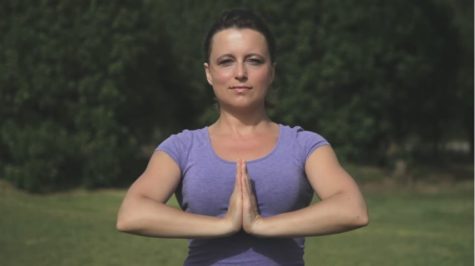
As you breathe in, lift both arms up from the sides and as you exhale, bring your palms together in front of the chest in prayer position.
Relax and breathe normally.
- Raised Arms Pose – Hastauttanasana
Breathing in, lift the arms up and back, keeping the biceps close to the ears. In this pose, the effort is to stretch the whole body up from the heels to the tips of the fingers
To deepen the stretch, push the pelvis forward a little bit. Ensure that you are reaching up with the fingers rather than trying to bend backwards.
Also called the Upward Salute, Urdhva Hastasana,Talasana, or the Palm Tree Pose.
- Hand to Foot Pose – Hasta Padasana
Breathing out, bend forward from the waist, keeping the spine erect. As you exhale completely, bring the hands down to the floor beside the feet.
You may bend the knees, if necessary, to bring the palms down to the floor. If it doesn’t touch, go as far as possible without straining. Try to touch the knees with the forehead. To deepen the stretch, straighten the knees.
This position is also called the Standing Forward Bend or Uttanasana.
- Equestrian Pose – Ashwa Sanchalanasana
Breathing in, push your right leg back as far as possible. Bring the right knee to the floor and look up.
The left foot is in between the palms. Be extra careful to avoid pressure on the back knee, especially if it is on the floor. If the neck is feeling sensitive then look down at the floor in front of you instead of lifting the head up.
- Stick Pose – Dandasana
As you breathe in, take the left leg back and bring the whole body in a straight line.
Keep your arms perpendicular to the floor.
This is similar to the Four-Limbed Staff Pose or Chaturanga Dandasana.
- Eight Points Salute – Ashtanga Namaskara
Gently bring your knees down to the floor and exhale. Take the hips back slightly, slide forward, and rest your chest and chin on the floor. Raise your posterior slightly.
Lower the body to the ground in such a way that it touches the floor in eight locations. The two hands, two feet, two knees, and chest and chin should touch the floor.
- Cobra Pose – Bhujangasana
Slide forward and raise the chest up into the Cobra Pose. You may keep your elbows bent in this pose with the shoulders away from the ears. Look up.
As you inhale, make a gentle effort to push the chest forward. As you exhale, make a gentle effort to push the navel down. Tuck the toes under.
This position looks like the cobra which has raised its hood.
- Mountain Pose – Parvatasana
While exhaling, take the right leg backward and place it along the left leg. Raise the buttocks. Let the hands be straight supporting the weight of the body. The head should be placed between the hands.
The pose looks like a mountain from the side. If possible, try and keep the heels on the ground and make a gentle effort to lift the tailbone up, going deeper into the stretch.
The Tadasana Pose is also called the Mountain Pose. The one described here is probably the exact same pose as the Downward Facing Dog or Adho Mukha Svanasana.
- Equestrian pose – Ashwa Sanchalanasana
Breathing in, bring the right foot forward in between the two hands, left knee down to the floor, press the hips down and look up. (This is the same position as before but with the right foot forward instead of the left foot forward.)
To deepen this yoga stretch, place the right foot exactly between the two hands and the right calf perpendicular to the floor. In this position, make a gentle effort to push the hips down towards the floor.
- Hand to Foot Pose – Hasta Padasana
Breathing out, bring the left foot forward. Keep the palms on the floor. You may bend the knees, if necessary. This is a repetition of the same pose earlier in the sequence.
To deepen this yoga stretch, gently straighten the knees and if you can, try and touch your nose to the knees. Keep breathing.
- Raised Arms Pose – Hastauttanasana
Breathing in, roll the spine up, hands go up and bend backwards a little bit, pushing the hips slightly outward.
To deepen this yoga stretch, ensure that your biceps are beside your ears. The idea is to stretch up more rather than stretching backwards.
- Standing Pose – Tadasana
As you exhale, first straighten the body, then bring the arms down. Relax in this position, observe the sensations in your body. You can also end your session with the Prayer Pose.
Confusingly, in some yoga traditions, Tadasana is also referred to as the Mountain Pose. It should not be confused with the Parvatasana (Mountain Pose) described above.
This completes one round of Sun Salutations. Start with one round when you are learning the practice and then increase it up to 10 rounds if you have the time and the desire.
An Important Point
I did the Sun Salutations for years, and really enjoyed them. I did not try very hard to do them exactly right, nor did I get caught up in proper form. I just did the best I could, and I didn’t care if it was sloppy or lazy or not very well done. And yet, it felt really good, and I got a lot of benefit from it.
If you enjoy yoga, and want to learn the correct techniques and get the most from the exercises, you can check out the information on each of the individual poses explained below. If you just want to get your body stretching and moving, watch the animation a few times and give it a go.
The Vinyasa-style Sun Salutations
The below detailed instructions come courtesy of The Yoga Journal.
- To begin, stand in Mountain Pose. Distribute your weight evenly over both feet. Establish a slow, steady rhythm for your breath. Find your center.
- Next, inhale and stretch your arms out to the side and overhead into Upward Salute.
- Reach your heart and arms to the heavens, sending your greeting to the sun.
- As you exhale, hollow out your belly and fold into Standing Forward Bend, connecting down into the earth. Keep your legs firmly engaged.
- Inhale and lengthen your spine forward into Standing Half Forward Bend. In this pose, the gaze is lifted, the spine is extended, and the fingertips can stay on the floor or rise to the shins.
- Exhale and step or lightly hop your feet back behind you into Plank Pose. Your wrists should be flat on the floor, shoulder-distance apart, and your feet should be at hip distance. Take a full breath in as you lengthen through your spine.
- Exhale and lower into Four-Limbed Staff Pose, keeping your legs straight and pushing back into your heels or bringing your knees to the floor. Build heat in the center of your body as you hold this challenging posture.
- Inhale and carve your chest forward into Upward-Facing Dog, directing that energy out from your heart. Pull your shoulders back and open your collarbones. Engage your legs but relax your gluteal muscles.
- Exhale and roll over the toes, coming into Downward-Facing Dog Pose. Ground down through your hands and feet as you lengthen your spine. Remain here for five breaths.
- On your fifth exhale, bend your knees and look between your hands. Then inhale and step or lightly hop your feet between your hands, returning to Standing Half Forward Bend.
- Exhale back to Standing Forward Bend, surrendering into the fold.
- Inhale, reaching your arms out wide to your sides and coming to stand through a flat back. Feel a renewed sense of energy as you draw your arms overhead into Upward Salute.
- Exhale and return to Mountain Pose, your home base. Remain here for a few breaths, feeling the movement of energy through your body, or continue on to your next salute.
The Individual Poses:
Prayer Pose – Pranamasana
The Prayer Pose is a common gesture used in India and many eastern countries to show respect and a popular way to greet others especially elders, seniors, gurus and guests.
In India, the word for greeting is “Namaste” which means that – I bow down to the Self in you. The Self or the Jiva is said to be located at the heart center.
Hence the palms are brought together touching one’s own heart when bowing down and greeting others. This gesture with the hands is called Pranamasana.
- Step 1
Stand erect with the feet held together.
- Step 2
Bring the two hands together and the palms touching each other at the chest level. Look straight ahead. Breathe in normally. This will give a sense of relaxation.
This pose is done in the beginning and end of the Sun Salutation. Pranamasana gives a sense of relaxation and inner peace when done with feeling.
Mountain Pose – Tadasana
The foundation of all standing poses, Mountain Pose makes a great a starting position, resting pose, or tool to improve posture.
- Note
The Mountain Pose – Tadasana shares its common name with Mountain Pose – Parvatasana which appears to be the same as Downward Facing Dog, descriptions of both can be found below.
- Step 1
Stand with the bases of your big toes touching, heels slightly apart (so that your second toes are parallel). Lift and spread your toes and the balls of your feet, then lay them softly down on the floor. Rock back and forth and side to side. Gradually reduce this swaying to a standstill, with your weight balanced evenly on the feet.
- Step 2
Firm your thigh muscles and lift the knee caps, without hardening your lower belly. Lift the inner ankles to strengthen the inner arches, then imagine a line of energy all the way up along your inner thighs to your groins, and from there through the core of your torso, neck, and head, and out through the crown of your head. Turn the upper thighs slightly inward. Lengthen your tailbone toward the floor and lift the pubis toward the navel.
- Step 3
Press your shoulder blades into your back, then widen them across and release them down your back. Without pushing your lower front ribs forward, lift the top of your sternum straight toward the ceiling. Widen your collarbones. Hang your arms beside the torso.
- Step 4
Balance the crown of your head directly over the center of your pelvis, with the underside of your chin parallel to the floor, throat soft, and the tongue wide and flat on the floor of your mouth. Soften your eyes.
Mountain Pose is usually the starting position for all the standing poses. But it’s useful to practice Mountain Pose as a pose in itself. Stay in the pose for 30 seconds to 1 minute, breathing easily.
Upward Salute – Urdhva Hastasana
Urdhva Hastasana literally translates to “Raised Hands Pose,” but it is also sometimes called Talasana, the Palm Tree Pose.
- Step 1
Stand in Mountain Pose. Turn your arms outward (or laterally) so your palms face away from your torso and thumbs point backward. With an inhale, sweep your arms out to the sides and up toward the ceiling.
- Step 2
If you’re tighter in the shoulders, stop when your arms are approximately parallel to each other. But if possible without hunching your shoulders forward, press your palms firmly together by, touching the bases of your palms first, then the palms themselves, and finally the fingers.
- Step 3
Extend your elbows fully and reach up through your pinkies so your thumbs turn slightly down toward the crown of your head. Making sure not to compress the back of your neck, tip your head back slightly and gaze at your thumbs.
- Step 4
Don’t let your lower front ribs protrude forward. Bring your front ribs down (toward your pelvis) and in (toward your spine), and lengthen your tail bone toward the floor. Then lift your rib cage evenly away from your pelvis to stretch the circumference of your belly. Hold for a few breaths.
- Step 5
Exhale and, as you sweep your arms out to the sides, tip your torso forward from the hip joints to fold into Standing Forward Bend.
This pose stretches the belly, improves digestion, stretches the shoulders and armpits, and helps relieve mild anxiety. It’s good for fatigue, asthma, indigestion and back ache.
Standing Forward Bend – Uttanasana
Standing Forward Bend will wake up your hamstrings and soothe your mind. If you have had a back injury, do this pose with bent knees.
- Step 1
Stand in Mountain Pose, hands on hips. Exhale and bend forward from the hip joints, not from the waist. As you descend draw the front torso out of the groins and open the space between the pubis and top sternum. As in all the forward bends, the emphasis is on lengthening the front torso as you move more fully into the position.
- Step 2
If possible, with your knees straight, bring your palms or finger tips to the floor slightly in front of or beside your feet, or bring your palms to the backs of your ankles. If this isn’t possible, cross your forearms and hold your elbows. Press the heels firmly into the floor and lift the sitting bones toward the ceiling. Turn the top thighs slightly inward.
- Step 3
With each inhalation in the pose, lift and lengthen the front torso just slightly; with each exhalation release a little more fully into the forward bend. In this way the torso oscillates almost imperceptibly with the breath. Let your head hang from the root of the neck, which is deep in the upper back, between the shoulder blades.
- Step 4
Standing Forward Bend can be used as a resting position between the standing poses. Stay in the pose for 30 seconds to 1 minute. It can also be practiced as a pose in itself.
- Step 5
Don’t roll the spine to come up. Instead bring your hands back onto your hips and reaffirm the length of the front torso. Then press your tailbone down and into the pelvis and come up on an inhalation with a long front torso.
- Beginner’s Tip
To increase the stretch in the backs of your legs, bend your knees slightly. Imagine that the sacrum is sinking deeper into the back of your pelvis and bring the tailbone closer to the pubis. Then against this resistance, push the top thighs back and the heels down and straighten the knees again. Be careful not to straighten the knees by locking them back (you can press your hands against the back of each knee to provide some resistance); instead let them straighten as the two ends of each leg move farther apart.
This pose calms the brain and helps relieve stress and mild depression. It also stimulates the liver and kidneys; stretches the hamstrings, calves, and hips; strengthens the thighs and knees; improves digestion; helps relieve the symptoms of menopause; and reduces fatigue and anxiety. It also relieves headache and insomnia. Standing Forward Bend is therapeutic for asthma, high blood pressure, infertility, osteoporosis, and sinusitis.
Standing Half Forward Bend – Ardha Uttanasana
With any neck injury, don’t lift the head to look forward.
- Step 1
From Standing Forward Bend, press your palms or fingertips into the floor (or blocks on the floor) beside your feet. With an inhale, straighten your elbows and arch your torso away from your thighs, finding as much length between your pubic bone and navel as possible.
- Step 2
With your palms (or fingertips) push down and back against the floor, and lift the top of your sternum up (away from the floor) and forward. You might bend your knees slightly to help get this movement, which will arch the back.
- Step 3
Look forward, but be careful not to compress the back of your neck. Hold the arched-back position for a few breaths. Then, with an exhale, release your torso into full Standing Forward Bend or, if you are doing the Sun Salutations, lower yourself into the plank position.
The Standing Half Forward Bend stretches the front torso, strengthens the back and improves posture. This position also stimulates the belly
Plank Pose
Plank Pose is one of the positions in the traditional Sun Salutation sequence. You can also perform this pose by itself and stay anywhere from 30 seconds to 1 minute. If you have carpal tunnel syndrome, it is not recommended that you hold this pose for any length of time.
- Step 1
If you are coming into this pose from the Standing Half Forward Bend, exhale and step or lightly hop your feet back behind you into Plank Pose.
When practicing this pose by itself, start in Downward Facing Dog. Then inhale and draw your torso forward until the arms are perpendicular to the floor and the shoulders directly over the wrists, torso parallel to the floor.
- Step 2
Press your outer arms inward and firm the bases of your index fingers into the floor. Firm your shoulder blades against your back, then spread them away from the spine. Also spread your collarbones away from the sternum.
- Step 3
Press your front thighs up toward the ceiling, but resist your tailbone toward the floor as you lengthen it toward the heels. Lift the base of the skull away from the back of the neck and look straight down at the floor, keeping the throat and eyes soft. Exhale and lower into Four-Limbed Staff Pose (if you are practicing the Sun Salutations).
A beginner’s best friend, this pose is the perfect precursor to more challenging arm balances. It strengthens the arms, wrists, and spine, and also tones the abdomen.
Four-Limbed Staff Pose – Chaturanga Dandasana
Four-Limbed Staff Pose is one of the positions in the Sun Salutation sequence. You can also practice this pose individually for anywhere from 10 to 30 seconds. Release with an exhalation. Either lay yourself lightly down onto the floor or push strongly back to Downward Facing Dog, lifting through the top thighs and the tailbone.
- Step 1
At this point, you are in the Plank Pose. Firm your shoulder blades against your back ribs and press your tailbone toward your pubis.
- Step 2
With an exhalation slowly lower your torso and legs to a few inches above and parallel to the floor. There’s a tendency in this pose for the lower back to sway toward the floor and the tailbone to poke up toward the ceiling. Throughout your stay in this position, keep the tailbone firmly in place and the legs very active and turned slightly inward. Draw the pubis toward the navel.
- Step 3
Keep the space between the shoulder blades broad. Don’t let the elbows splay out to the sides; hold them in by the sides of the torso and push them back toward the heels. Press the bases of the index fingers firmly to the floor. Lift the top of the sternum and your head to look forward.
- Contraindications and Cautions
It is not recommended that you hold this pose for any length of time if you are pregnant, or if you have carpal tunnel syndrome.
Even experienced students have difficulty with Four-Limbed Staff Pose. Lay a thickly rolled blanket on the floor below your Plank Pose, parallel to your spine. Lower yourself lightly onto this support. Use it minimally, just enough to keep yourself afloat.
You can get a feel for this challenging position by practicing it standing upright. Stand and face a wall, a few inches away from the wall. Press your hands against the wall, slightly lower than the level of your shoulders. Imagine that you are trying to push yourself away from the wall, but the firmness of your shoulder blades against the back prevents any movement. Lengthen your tailbone into your heels and lift the top of your sternum toward the ceiling.
The completed form of Four-Limbed Staff Pose is quite difficult to perform at first, until your arms, back, and legs are strong enough to support you. From Plank Pose, begin by lowering your knees to the floor and then, with an exhalation, lower your sternum to within an inch or two above the floor.
Upward Facing Dog – Urdhva Mukha Svanasana
Upward-Facing Dog will challenge you to lift and open your chest. Upward Facing Dog is one of the positions in the traditional Sun Salutation sequence. You can also practice this pose individually, holding it anywhere from 15 to 30 seconds, breathing easily. Release back to the floor or lift into Downward Facing Dog with an exhalation.
- Step 1
Lie prone on the floor. Stretch your legs back, with the tops of your feet on the floor. Bend your elbows and spread your palms on the floor beside your waist so that your forearms are relatively perpendicular to the floor.
- Step 2
Inhale and press your inner hands firmly into the floor and slightly back, as if you were trying to push yourself forward along the floor. Then straighten your arms and simultaneously lift your torso up and your legs a few inches off the floor on an inhalation. Keep the thighs firm and slightly turned inward, the arms firm and turned out so the elbow creases face forward.
- Step 3
Press the tailbone toward the pubis and lift the pubis toward the navel. Narrow the hip points. Firm but don’t harden the buttocks.
- Step 4
Firm the shoulder blades against the back and puff the side ribs forward. Lift through the top of the sternum but avoid pushing the front ribs forward, which only hardens the lower back. Look straight ahead or tip the head back slightly, but take care not to compress the back of the neck and harden the throat.
- Contraindications and Cautions
It is not recommended that you hold this position for any length of time if you have the following – back injury, Carpal tunnel syndrome, headache, or pregnancy.
Often it’s difficult to keep the legs strongly suspended above the floor. Before you move into the pose, position a thick blanket roll below your top thighs. When you are in the pose, lightly rest your thighs on this roll as you press the tailbone closer to the roll.
There’s a tendency in this pose to “hang” on the shoulders, which lifts them up toward the ears and “turtles” the neck. Actively draw the shoulders away from the ears by lengthening down along the back armpits, pulling the shoulder blades toward the tailbone, and puffing the side ribs forward. If you need help learning this, lift each hand on a block.
Upward Facing Dog improves posture; strengthens the spine, arms, wrists; stretches chest and lungs, shoulders, and abdomen; firms the buttocks; and stimulates abdominal organs. This position also helps relieve mild depression, fatigue, and sciatica, and is therapeutic for asthma.
Downward Facing Dog – Adho Mukha Svanasana
Deservedly one of yoga’s most widely recognized yoga poses, Downward Facing Dog, offers the ultimate all-over, rejuvenating stretch. Downward Facing Dog is one of the poses in the traditional Sun Salutation sequence. It’s also an excellent yoga asana all on its own. Stay in this pose anywhere from 1 to 3 minutes. Then bend your knees to the floor with an exhalation and rest in Child’s Pose.
- Step 1
Come onto the floor on your hands and knees. Set your knees directly below your hips and your hands slightly forward of your shoulders. Spread your palms, index fingers parallel or slightly turned out, and turn your toes under.
- Step 2
Exhale and lift your knees away from the floor. At first keep the knees slightly bent and the heels lifted away from the floor. Lengthen your tailbone away from the back of your pelvis and press it lightly toward the pubis. Against this resistance, lift the sitting bones toward the ceiling, and from your inner ankles draw the inner legs up into the groins.
- Step 3
Then with an exhalation, push your top thighs back and stretch your heels onto or down toward the floor. Straighten your knees but be sure not to lock them. Firm the outer thighs and roll the upper thighs inward slightly. Narrow the front of the pelvis.
- Step 4
Firm the outer arms and press the bases of the index fingers actively into the floor. From these two points lift along your inner arms from the wrists to the tops of the shoulders. Firm your shoulder blades against your back, then widen them and draw them toward the tailbone. Keep the head between the upper arms; don’t let it hang.
- Contraindications and Cautions
Pregnancy: Do not do this pose late-term. High blood pressure or headache: Support your head on a bolster or block, ears level between the arms. Do not hold this pose for any length of time if you have Carpal tunnel syndrome or Diarrhea.
If you have difficulty releasing and opening your shoulders in this pose, raise your hands off the floor on a pair of blocks or the seat of a metal folding chair.
Downward Facing Dog calms the brain and helps relieve stress and mild depression. This pose also energizes the body; stretches the shoulders, hamstrings, calves, arches, and hands; and strengthens the arms and legs. It helps relieve the symptoms of menopause; and relieves menstrual discomfort when done with head supported. Downward Facing Dog helps prevent osteoporosis; improves digestion; and relieves headache, insomnia, back pain, and fatigue. It is therapeutic for high blood pressure, asthma, flat feet, sciatica, and sinusitis.
Equestrian Pose – Ashwa Sanchalanasana
The Equestrian Pose is also called the Lunge Pose. Be extra careful to avoid pressure on the back knee, especially if it is on the floor. Consider placing a blanket underneath the knee to support it. This pose is fairly easy to do and gives flexibility to the legs. If the neck is feeling sensitive then look down at the floor in front of you instead of lifting the head up
- Step 1
The Equestrian Pose is done immediately after the Hand To Foot Pose (Standing Forward Bend) when doing the traditional version of the Sun Salutations. So this is the starting pose for the Equestrian Pose.
- Step 2
From this position, take the left leg as far back as possible. In the process, bend the right knee without changing its position. Inhale while stretching the left leg backwards.
- Step 3
Keep the hands straight with fingers touching the floor. Arch the back and tilt the head slightly backward. Look straight ahead.
When done as part of the Sun Salutation exercises a mantra can be chanted while performing this asana. Equestrian Pose is done as the 4th pose and the 9th pose. During 4th pose chant “Om Bhanave Namaha”. It means salutations to the one who shines. During 9th pose chant “Om Adityaya Namaha”. It means salutation to the son of Aditi.
The Equestrian Pose stretches the groin, quadriceps, leg and the hips; and also stretches the back muscles and opens the chest. It tones the abdominal organs and is good for indigestion, constipation and sciatica. It also gives a sense of nervous balance.
Mountain Pose – Parvatasana
In Sanskrit “Parvata’ means mountain. The pose looks like a mountain from the sides and hence the name Parvatasana. Confusingly, in some yoga traditions, Mountain Pose is also a name given to the Tadasana pose and this pose is probably the exact same pose as the Downward Facing Dog or Adho Mukha Svanasana.
As part of the Sun Salutation exercises, Parvatasana Mountain Pose is performed after the Equestrian Pose. Hence the Equestrian Pose becomes the starting pose for Parvatasana Mountain Pose.
- Step 1
From the Equestian Pose, straighten the bent leg and take it backwards. Exhale during this process. Let the right and left foot be together.
- Step 2
Raise the buttocks up. Let the two arms be on the floor and support the body weight.
- Step 3
Lower the head to be between the two arms. The body makes the shape of a triangle when observed from the sides. It looks like a mountain and hence the name.
When done as part of one of the traditional versions of the Sun Salutation exercises, Parvatasana Mountain Pose is done as the fourth pose and the ninth pose.
Parvatasana Mountain Pose can strengthen the wrists and legs. It also increases the flow of blood to the head. It tones the spinal nerves and sends good flow of blood to the spinal region. This pose also increases blood flow to the brains.
Eight Limbed Salutation – Ashtanga Namaskara
The Eight Limbed Salutation is part of the Sun Salutation series of asanas. It appears as the 6th pose in the Sun Salutation or Surya Namaskara. In this pose, the body touches the ground in eight locations – the two feet (toes), the two knees, the two palms, the chest and the head.
In Sanskrit, “ashta” means eight and “anga” means part. Hence the name Ashtanga Namaskara. This pose is also used by devotees for paying obeisance to deities in Indian temples.
- Step 1
Lower the body so that the body is parallel to the ground.
- Step 2
Let the following parts touch the floor – The two feet, the two knees, the two palms, the chest and the chin. The hip and abdomen is slightly raised up.
While performing this pose the breath is held outside and the breathing is stopped for few seconds.
Cobra Pose – Bhujangasana
The Cobra Pose, is one of the main backward bending asanas used in yoga. In the Cobra Pose, the head and trunk resembles a cobra with raised hood, hence the name (Bhujanga means Cobra in sanskrit).
- Step 1
Lie down on your stomach with hands on the side, toes touching together.
- Step 2
Bring your hands to the front at the shoulder level, with palms resting on the floor. Slowly raise your trunk and head with the support of the palms alone. The arms should be bent at the elbows.
- Step 3
Arch your neck slightly backwards, so that the pose looks like a cobra with raised hood. Breathe normally and feel the stomach press against the floor.
- Step 4
Hold the position for few seconds in the beginning stages. One may go up to 2 minutes as one progresses. You can release the pose by bringing the hands back to the sides and resting your head on the forehead. Then, place the hands under your head like a pillow. Bend and rest your head on one side and breathe normally.
Usually our back muscles don’t get much exercise, in our day to day activities. The weakening of these muscles can lead to back aches, stooping, slipped disks and other posture defects. The Cobra Pose is an easy way to strengthen the back muscles. You should avoid this asana if you are pregnant or if you have had any abdominal surgery in the recent past.
Last But Not Least:
I also found this graphic that shows how to do Sun Salutations in a seated position.
Sources:
Get Moving In The Morning
“Movement is life.” First, on a sheer biological level, without movement, there truly is no life. If your lungs do not move, you can not breathe. If your heart does not move, it can not pump blood through your body. When the blood cells don’t move in your body, they can not carry the much needed oxygen. And the list goes on and on. Movement is what equips our amazing and highly complex bodies to operate. So, movement is life.
So, with that said, any person has the ability to do ten to fifteen minutes of light, moderate movement to start their day. And, this is not “going to the gym for 2 hours” type of exercise. This morning exercise routine is more of a “your body has been asleep for hopefully 7 hours and needs to be primed and stretched before being able to fully function for you through the day” type of exercise.
This is an exercise that requires no equipment. It can be done anywhere, inside or outside. It has a track record of thousands of years and shares much in common with yoga but many find it less difficult and you don’t have to get on the floor!
Qi Gong is an ancient Chinese health care system that integrates physical postures, breathing techniques and focused intention to open blockages in the body based on the same meridian system used in acupuncture. The movements are fairly easy to learn and allow access to everyone. To begin to benefit from Qi Gong you do not have to be fit, you don’t have to be flexible; you don’t even have to be able to stand up. The exercises can be modified for almost anyone with patience that wants to learn.
What is Qi Gong?
Qi Gong (qigong, chi kung, chi gung) is an ancient Chinese health care system that integrates physical postures, breathing techniques and focused intention. The word Qi Gong is made up of two Chinese words: Qi (chi) is pronounced chee and is usually translated to mean the life force or vital-energy that flows through all things in the universe. And, the second word, Gong, pronounced gung, means accomplishment, or skill that is cultivated through steady practice. So, put together, Qi Gong (Chi Kung) literally means “Life Energy Cultivation.”
It is a holistic system of coordinated body posture and movement, breathing, and meditation used for health, spirituality, and martial arts training. With roots in Chinese medicine, philosophy, and martial arts, Qi Gong is traditionally viewed as a practice to cultivate and balance qi (life energy). Therefore, it is a system practiced for health maintenance, healing and increasing vitality.
According to Taoist, Buddhist, and Confucian philosophy, Qi Gong allows access to higher realms of awareness, awakens one’s “true nature”, and helps develop human potential. This powerful system of exercise, has been practiced for centuries by millions of Chinese people, and is now practiced worldwide for recreation, exercise and relaxation, preventive medicine and self-healing, alternative medicine, meditation and self-cultivation, and training for martial arts.
Qi Gong practice typically involves moving meditation, coordinating slow flowing movement, deep rhythmic breathing, and calm meditative state of mind. It is based on repetitions of very precise sets of movements, specifically designed to benefit health on many different levels. Some common Qi Gong movements include raising and lowering the arms, moving the head from side to side, and gently rubbing the ears, feet, and hands.
The Benefits of Qi Gong
Sometimes Qi Gong is called a moving meditation in which the mind and body are led to a state of balance and equilibrium also known as homeostasis. A Harvard medical publication said it should also be called “moving medication.” The advantages of improving strength, flexibility and balance are pretty obvious but the advantages of peace that comes from the moving flowing meditative aspect of Qi Gong is equally important.
When the body is in a state of balance all the systems work better.
Much of the tendency to this internal balance is happening all of the time totally out of our awareness. With very little conscious input from us, our bodies are working to keep us in a state of homeostasis, that is, everything just so. The fight-flight reaction vs. the relaxation response is an example of the body tending toward homeostasis.
But in our stressed out world many of us are living in a continuous state of stress without even being aware of it. Without practice the relaxation response doesn’t always occur. Qi Gong can help us return to homeostasis and the relaxation response.
In addition to our tendency to stress there is a second profound tendency to move less as we develop physical limitations. Often the two occur together but either alone can lead to a downward spiral.
The health benefits from Qi Gong comes about both by supporting the body’s natural tendency to return to balance and equilibrium and also gently yet profoundly creating strength, flexibility and balance in the muscles and joints through gentle flowing movements. This is the winning combination: body and mind. The physical and mental practice continuously supports the return to balance.
The Eight-brocade Exercise (Ba Duan Jin)
The Eight-brocade Exercise (Ba Duan Jin) is a simple sequence of movements, appropriate for almost anyone. Unlike more advanced Qi Gong practices, it can be learned from a book. The complete set of movements only takes five to ten minutes to do and helps to release blockages along all twelve meridians.

This 800-year old exercise, which the ancients likened to beautiful brocade, consists of eight sections, is very popular among the Chinese people. There are different postures such as sitting or standing; each section can be practiced on its own and each targets a specific organ or health need. The whole set of movements are fine and delicate with moderate intensity. The movements can vary greatly according to different schools of practice; the following is the most important and widely practiced protocol.
Prepare yourself by standing naturally with feet shoulder-width apart, and the hands hanging by both sides. Be calm, focused and let the body relax and the breathing natural.
- Two Hands Hold up the Heavens
Raise both hands above the head with the palms facing upward, as if holding up the heavens. The eyes should follow the hands over the head. Stretch up on the toes and hold the posture for a few seconds before gently returning to the starting position. Inhale through the nose while bringing the arms up, and exhale through the mouth when bringing the arms down. Repeat the procedure six times.
This section is said to benefit the triple burner, which is the passage for water, nutrients and fluid throughout the body. This exercise activates the fluid flowing in it and ensures proper nourishment throughout the body.
- Draw a bow like shooting a hawk
Separate the legs and bend the knees, with half-clenched fists in front of the chest. Draw the hands up and pull as if drawing a bow to the right; extend the limbs fully; then repeat on the left side. The eyes should follow the trajectory of the imaginary arrow at all times. Inhale through the nose while drawing the arms up, and exhale through the mouth when bringing the arms down. Repeat the whole procedure six times.
This section is said to benefit the lungs by expanding the chest and exercising the muscles of the upper body.
- Separate Heaven and Earth
Standing naturally with arms bent at the elbows, let the palms face upwards and the fingertips touch each other. Raise the hands and turn the palms downwards; then draw the right hand up with the palm facing upward; the left hand moves downward with the palm facing down. When the arms are extended, straighten the legs. Exhale through the nose when both hands are in front of the chest, and inhale through the mouth when the arms are apart. Repeat the whole procedure six times.
This section is said to regulate the spleen and stomach by the lifting and lowering actions. It contributes to the ascending of spleen-qi and the descending of stomach-qi, thus promoting the digestive functions.
- Wise Owl Gazes Backwards
Inhaling while slowly turning the head to the right side as far as possible, look back as much as possible, then exhale and return to the original position. Repeat on the left side as one complete procedure and repeat six times.
This section is said to benefit those with consumptive disease and injuries by enriching the essence and blood, calming the mind and promoting organ functioning.
- Sway the Head and Shake the Tail
Prepare by squatting down halfway with feet apart and the palms on the thighs. Look down and lean the upper trunk forward, exhaling while swinging the head to the left and swinging the buttocks to the right; inhale while returning. Switch directions and repeat the cycle six times.
It is said that swaying the head can send down heart-fire while swinging the buttocks causes the kidney-yin to ascend to meet the heart-fire; it lets both organs mutually complement each other.
- Two Hands Hold the Feet
Bend over slowly and touch your toes keeping the legs straight; keep the head up slightly. Then place the hands on the lower back and bend backward and stretch as far as you can. Inhale through the nose at the start of the bend and exhale through the mouth at the end. Repeat the whole procedure six times.
This section can reinforce the kidneys and strengthen the waist and the knees. The kidneys are the source of all energy in the body and are located near the waist; constant practice benefits the function of all the other organ systems as well.
- Punch With Anger
Take a horse-riding posture; the hands are tightly clenched with palms facing upwards at waist level. Punch with the palm side downward and draw back with alternative arms; imagine pent-up anger being released through the punch. Inhale through the nose and exhale through the mouth.
This section is said to strengthen the muscles of the whole body.
- Bouncing on the Toes
Interlock the hands and put them behind the neck and extend the neck backward while the hands draw forward; stretch up on the toes and hold the posture for a few seconds before gently returning to the starting position. Exhale while lifting on both heels; inhale while returning.
This is a push upward from the toes with a small rocking motion on landing. The gentle shaking vibrations of this piece is said to “smooth out” the qi after practice of the preceding seven pieces. Repeat six times.
This section is said to enhance the protective qi and promote resistance. The Bladder Meridian, which governs the surface of the whole body, passes through the neck. The movements promote the smooth flow of protective qi and secure the striae on the body surface.
Sources:
Healthy Benefits of Hot Water With Lemon
The benefits of lemon water goes beyond the fact that it can quench thirst better than any other drink – it also provides our bodies with plenty of vitamins, minerals and vital trace elements. It’s also a great energy booster for when we wake up first thing in the morning as our tissues are dehydrated and in desperate need of fluid to push out toxins.
Warm lemon water in the morning helps kickstart the digestion process for the day. According to Ayurvedic philosophy, choices that you make regarding your daily routine either build up resistance to disease or tear it down. Ayurveda invites us to get a jump-start on the day by focusing on morning rituals that work to align the body with nature’s rhythms, balance the doshas and foster self-esteem alongside self-discipline.
There are many health benefits of lemons that have been known for centuries. The two biggest are lemons’ strong antibacterial, antiviral, and immune-boosting powers and their use as a weight loss aid because lemon juice is a digestive aid and liver cleanser. Lemons contain many substances–notably citric acid, calcium, magnesium, vitamin C, bioflavonoids, pectin, and limonene–that promote immunity and fight infection.
How To Do It:
You should be using purified water and it should be warm not scalding hot. You want to avoid ice cold water, since that can be a lot for your body to process and it takes more energy to process ice cold water than the warm. Always use fresh lemons, organic if possible, never bottled lemon juice. I squeeze 1/2 a lemon with each glass and I drink it down first thing before I eat a single thing, or workout, etc.
BONUS: try adding freshly grated ginger or a little cayenne for a boost.
Why It’s Good For You:
- Aids Digestion.
Lemon juice flushes out unwanted materials and toxins from the body. It’s atomic composition is similar to saliva and the hydrochloric acid of digestive juices. It encourages the liver to produce bile which is an acid that is required for digestion. Lemons are also high in minerals and vitamins and help loosen ama, or toxins, in the digestive tract. The digestive qualities of lemon juice help to relieve symptoms of indigestion, such as heartburn, belching and bloating. The American Cancer Society actually recommends offering warm lemon water to cancer sufferers to help stimulate bowel movements.
- Cleanses Your System / is a Diuretic.
Lemon juice helps flush out unwanted materials in part because lemons increase the rate of urination in the body. Therefore toxins are released at a faster rate which helps keep your urinary tract healthy. The citric acid in lemons helps maximize enzyme function, which stimulates the liver and aids in detoxification.
- Boosts Your Immune System.
Lemons are high in vitamin C, which is great for fighting colds. They’re high in potassium, which stimulates brain and nerve function. Potassium also helps control blood pressure. Ascorbic acid (vitamin C) found in lemons demonstrates anti-inflammatory effects, and is used as complementary support for asthma and other respiratory symptoms plus it enhances iron absorption in the body; iron plays an important role in immune function. Lemons also contain saponins, which show antimicrobial properties that may help keep cold and flu at bay. Lemons also reduce the amount of phlegm produced by the body.
- Balances pH Levels.
Lemons are one of the most alkalizing foods for the body. Sure, they are acidic on their own, but inside our bodies they’re alkaline (the citric acid does not create acidity in the body once metabolized). Lemons contain both citric and ascorbic acid, weak acids easily metabolized from the body allowing the mineral content of lemons to help alkalize the blood. Disease states only occur when the body pH is acidic. Drinking lemon water regularly can help to remove overall acidity in the body, including uric acid in the joints, which is one of the primary causes of pain and inflammation.
- Clears Skin.
The vitamin C component as well as other antioxidants helps decrease wrinkles and blemishes and it helps to combat free radical damage. Vitamin C is vital for healthy glowing skin while its alkaline nature kills some types of bacteria known to cause acne. It can actually be applied directly to scars or age spots to help reduce their appearance. Since lemon water purges toxins from your blood, it would also be helping to keep your skin clear of blemishes from the inside out. The vitamin C contained in the lemon rejuvenates the skin from within your body.
- Energizes You and Enhances Your Mood.
The energy a human receives from food comes from the atoms and molecules in your food. A reaction occurs when the positive charged ions from food enter the digestive tract and interact with the negative charged enzymes. Lemon is one of the few foods that contain more negative charged ions, providing your body with more energy when it enters the digestive tract. The scent of lemon also has mood enhancing and energizing properties. The smell of lemon juice can brighten your mood and help clear your mind. Lemon can also help reduce anxiety and depression.
- Promotes Healing.
Ascorbic acid (vitamin C), found in abundance in lemons, promotes wound healing, and is an essential nutrient in the maintenance of healthy bones, connective tissue, and cartilage. As noted previously, vitamin C also displays anti-inflammatory properties. Combined, vitamin C is an essential nutrient in the maintenance of good health and recovery from stress and injury.
- Freshens Breath.
Besides fresher breath, lemons have been known to help relieve tooth pain and gingivitis. Be aware that citric acid can erode tooth enamel, so you should be mindful of this. No not brush your teeth just after drinking your lemon water. It is best to brush your teeth first, then drink your lemon water, or wait a significant amount of time after to brush your teeth. Additionally, you can rinse your mouth with purified water after you finish your lemon water.
- Hydrates Your Lymph System.
Warm water and lemon juice supports the immune system by hydrating and replacing fluids lost by your body. When your body is deprived of water, you can definitely feel the side effects, which include: feeling tired, sluggish, decreased immune function, constipation, lack of energy, low/high blood pressure, lack of sleep, lack of mental clarity and feeling stressed, just to name a few.
- Aids in Weight Loss.
Lemons are high in pectin fiber, which helps fight hunger cravings. Studies have shown people who maintain a more alkaline diet, do in fact lose weight faster. I personally find myself making better choices throughout the day, if I start my day off right, by making a health conscious choice to drink warm lemon water first thing every morning.
More Health Benefits:
- Lemon water will provide your body with plenty of hydrating electrolytes in the form of potassium, calcium and magnesium.
- Lemon is an excellent and rich source of vitamin C, an essential nutrient that protects the body against immune system deficiencies
- Lemons contain pectin fibre which is very beneficial for colon health and also serves as a powerful antibacterial
- It balances to maintain the pH levels in the body
- Having warm lemon juice early in the morning helps flush out toxins.
- It aids digestion and encourages the production of bile.
- It helps prevent the growth and multiplication of pathogenic bacteria that cause infections and diseases.
- Lemon water can help reduce both joint and muscle pain. It helps reducing pain and inflammation in joints and knees as it dissolves uric acid.
- It helps cure the common cold .
- The potassium content in lemon helps nourish brain and nerve cells.
- It helps balance the calcium and oxygen levels in the liver In case of a heartburn, taking a glass of concentrated lemon juice can give relief.
- It is of immense benefit to the skin and it prevents the formation of wrinkles and acne.
- It helps maintain the health of the eyes and helps fight against eye problems.
- Aids in the production of digestive juices.
- Lemon juice helps replenish body salts especially after a strenuous workout session.
- Mixing a teaspoon of lemon juice per half glass of water can help relieve heartburn.
- Lemon water will help your liver produce more enzymes with the help of lemon water than any other substance.
- Several studies have found that cancer cannot thrive in an environment that is rich with alkaline – a substance prevalent in lemon.
- Lemon water also aids your liver in helping it release toxins.
- If kidney stones are a concern for you, drinking lemon water can help dissolve not only those but gallstones, pancreatic stones and calcium deposits as well.
- Lemon water can help you battle everything from sore throats to tonsil inflammation, thanks to the anti-inflammatory property of lemon.
- Drinking lemon water can help relieve tooth pain and fight gingivitis.
- Lemon water can help you better regulate your bowel movements.
- Lemon water has a high potassium content – depression and anxiety are often linked to not having enough potassium in your blood.
- Lemon water can help cleanse your blood and arteries.
- Daily ingestion of one lemon is estimated to reduce high blood pressure by 10% – drinking lemon water is a great way to work towards that quantity.
- Lemons contain vitamin C, which is known to improve skin conditions through the revitalizing of the body.
- Gout pain can be attributed to a buildup of uric acid – lemon water helps dilute this acid, thereby reducing this pain.
- The vitamin C in lemon helps lemon water act as an adaptogen, allowing the body to better cope with various viruses.
- Lemons have pectin fiber, which aids in the suppression of hunger cravings.
- Beneficial during pregnancy because it can help the bone tissue formation of your unborn baby.
From:
Tea and Crumpets
Now that we’ve worn ourselves out cleaning, decluttering, and rummaging through our closets, I think it’s time for a spot of tea. Even better… let’s have some tea and crumpets!
First up, let’s talk about the tea.
What’s in a tea? Well, hundreds of benefits are hidden within this coloured water that not so many people are particularly fond of. Summer is a great time to take up this wonderful habit, by creating the most appealing iced teas and thus benefiting from their medicinal and restorative powers.
What few of us know is the fact that the word “tea” is correctly used for the following types only:
- Green tea
- Black tea
- White tea
- Oolong tea
- Pu-erh tea
These 5 teas are definitely worth the try. The rest should simply be referred to as infusions. The five kinds are all derived from the Camellia sinensis plant, a shrub native to China and India, and contain unique antioxidants called flavonoids. They all protect against free radicals that can contribute to cancer, heart disease, and clogged arteries. Oolong and black teas are oxidized or fermented, so they have lower concentrations of flavonoids than green tea, but nevertheless their antioxidising power is still high.
Green tea makes you smart and slim
Green tea is supposedly the healthiest beverage on our planet. It contains more than just plain caffeine. Apart from the fact that it produces a response without causing the “jittery” effects associated with too much caffeine, it also has the amino acid L-theanine, which increases the activity of the inhibitory neurotransmitter GABA, which has anti-anxiety effects. It also increases dopamine and the production of alpha waves in the brain.
In other words, these two components mixed together are particularly capable of improving overall brain function.
Apart from making you smart, your drinking at least three cups of green tea a day is recommended to raise the body’s metabolic rate. It is believed that the catechins found in it increase the production of heat within the body, which is related to burning calories. These compounds may inhibit certain chemicals in the brain, thus prolonging this process.
Black tea makes your teeth healthy
Black tea was proved to reduce plaque formation as well as restricting bacteria growth that promotes the formation of cavities and tooth decays. The flavonoids found in black tea kill and surpass cavity bacteria as well as inhibit the growth of bacterial enzymes that form along with that sticky white stuff on our teeth that attracts plaque like a magnet.
White tea keeps your bones healthy
White tea’s antioxidants and anti-aging properties not only protect and help reverse damaged skin, but a regular intake of white tea can improve bone density and strength, and may provide a natural relief from the symptoms of osteoporosis.
Oolong tea makes your skin look healthy and young
According to the Tea Association of the United States, oolong tea falls somewhere between green and black teas, as its leaves are only partially oxidized.
Patients diagnosed with eczema are recommended to drink 3 cups of oolong tea per the day. The beneficial results of oolong tea are likely to be seen in less than a week in these patients. All oolong tea drinkers show remarkable improvement in their skin.
Keep in mind that despite its miraculous effects, oolong tea tends to be very high in caffeine, which is not the healthiest component of this beverage. So if a healthy skin is your aim, try not to exaggerate and drink more than 3 cups a day.
Pu-erh tea is the best hangover cure
In traditional Chinese herbalism, pu-erh tea is considered to open the meridians and warm the spleen and stomach. It helps digestion and cleans your blood. It is often consumed after heavy meals or drunk as a hangover cure or preventative.
The microbial aging of pu-erh tea can result in the production of lovastatin, a natural statin that is used to lower levels of bad cholesterol such as LDL. One study found that the longer this type of tea was aged, the more statin was produced.
So drink up! It is recommended to have a slightly hot cup of tea every time you feel hot, and your body’s temperature will return to its regular value.
How to make a good pot of tea
These are the golden rules:
- Tea loves oxygen – it helps the flavor develop, so always use freshly drawn cold water in the kettle.
- Make sure your pot is clean.
- Warm the pot by swirling a small amount of boiled water in it.
- For black tea, only pour on freshly boiled water and do not over-boil it.
- For green tea, always use the water just at the boil.
- One teaspoon of loose tea per person and one teaspoon for the pot is about right, but add as much or as little to make it to the strength you like.
- Some people believe that sugar masks the flavors in tea. Why not try a fruit tea if you prefer a sweeter taste?
- A tea cosy extends the brewing time and can make the tea bitter and stewed. A removable infuser or teabags can help to get round this problem.
How long should I allow a teabag to brew?
Twinings of London recommends that you allow the teabag to brew for two and a half to three minutes. This allows the flavor to fully develop. Then add milk or lemon or enjoy it black, whatever your preference.
And how long should I allow loose tea to brew?
We recommend that you allow loose tea to brew in a teapot for up to seven minutes. The general rule is: the larger the leaf, the longer the brewing time. Earl Grey and Lady Grey need five minutes, while a smaller leaf tea will only need about four minutes.
Does loose tea make better tea than teabags?
Both have their benefits. For many people, the ritual of preparing loose tea is a pleasure in itself, so this contributes to the enjoyment, while teabags are more convenient. The leaf size is different but the quality in the cup will be the same.
Should the milk go in first or second?
Historically, the ‘milk in first’ rule was to protect the fine bone china it was served in – it’s a very individual thing.
Sometimes I get an oily residue around my cup and on the surface of my tea – what is it?
Because of the small leaf-size in a teabag, the tea can release some essential oils which can sometimes produce a residue. However, this brown residue occurs most often in areas with hard water, so a carbon water filter will reduce this considerably.
How should tea be stored?
Tea absorbs moisture and kitchen smells. To keep your tea fresh and avoid spoiling the flavor, keep loose tea or teabags in a sealed jar or tin.
Some Interesting Tea Lore
- Tea was MONEY:
In the twelfth century when China began exporting tea, TEA BRICKS became the often preferred form of currency. It was light, valuable and in desperate need you could even eat the bricks. Tea contains, along with its many other nutrients, small amounts of protein.
- Green Tea Cleanses the Body and the Soul
Green Tea originated as a large tree growing in the Himalayan jungles. It was cultured into the short bushes grown throughout the world now, by Chinese monks who had discovered its many benefits.
The Taoists claimed green tea as an important ingredient of the elixir of immortality. The Buddhists used it extensively to prevent drowsiness during their long hours of meditation.
The first bowl moistens my lips and throat; The second bowl banishes all loneliness; The third bowl clears my mind of words and books. The fourth cup, I begin to perspire, Life’s troubles evaporate through my pores. The firth cup cleanses my entire being. Six cups – ah, but I can drink no more: I can only feel the gentle breeze blowing through my sleeves, Wafting me away to the Isle of Immortality!
Lu ton, Eight-century Chinese Poet, from In Gratitude for a Gift of Fresh Tea
- Tea Transformed Japan’s Culture
Green Tea was said to be introduced into Japan in 1191 by the monk Eisaid when he returned to Japan with Buddhism. The cult of tea began after Eisai helped cure the famous shogun of Japan Minamoto.
The whole culture of the country evolved around the Japanese Tea Ceremony which uses very finely ground green tea leaves in an elaborate ceremony lasting many hours.
The Tea Ceremony was a worship of the art of life, an appreciation of refinement and purity, a process to go beyond the dreary waste of existence.
- Tea Transformed British Culture
In Britain, tea rapidly replaced much of the beer, ale and alcohol consumption with a beverage that was actually good for you. The British were transformed from an aggressive, meat and beer drinking mass to a more gentle, civilized people.
For the middle class of Britain, the tea parties and tea gardens allowed women and children to get out and socialize for the first time in their history. Many movements such as missionaries, charities and the girl guides started as tea groups.
For the lower class of Britain, tea breaks made life bearable – the tea gave them energy and a lift of spirits which other beverages could not. They spent HALF their food budget on tea (and sugar to put in it) for good reason.
Now that we know a little bit about tea, lets make some crumpets to go with it!
Crumpets
What is a crumpet? This traditional British teatime treat is midway between English muffin and pancake. Like an English muffin, it’s full of holes, perfect for collecting rivulets of melted butter. But it’s also moister and thinner – more like a small pancake.
These are best enjoyed toasted, and spread with butter, jam, and/or clotted cream. Since their holes reach to the outside crust, there’s no need to split them before toasting.
You can make crumpets without English muffin rings (or cleaned tuna cans), but they’ll be perfectly round and ever so much nicer looking if you use rings. Here’s a recipe from King Arthur Flour.
A Great Crumpet Recipe
Ingredients:
- 1 1/2 cups lukewarm water
- 1 cup lukewarm milk
- 2 tablespoons melted butter
- 3 1/2 cups Unbleached All-Purpose Flour
- 2 1/2 teaspoons instant yeast
- 1 teaspoon baking powder
- 1 1/4 teaspoons salt
Instructions:
Combine all of the ingredients in a bowl, and beat vigorously for 2 minutes. A stand or hand mixer, set on high speed, work well here.
Cover the bowl, and let the batter rest at room temperature for 1 hour. It will expand and become bubbly. Towards the end of the rest, preheat a griddle to medium-low, about 325°F. If you don’t have an electric griddle, preheat a frying pan; it shouldn’t be as hot as the temperature you use to cook pancakes.
Lightly grease the griddle or frying pan, and place well-greased 3 3/4″ English muffin rings in the pan, as many as will fit. (If you don’t have English muffin rings, use well-cleaned tuna cans, from which you’ve removed the top and bottom.) Pour sticky batter by the scant 1/4-cupful into each ring; a muffin scoop works well here.
After about 4 minutes, use a pair of tongs to slip the rings off. Cook the crumpets for a total of about 10 minutes on the first side, until their tops are riddled with small bubbles/holes. They should be starting to look a bit dry around the edges. Their bottoms will be a mottled, light-golden brown. Note: They probably won’t be as full of holes as store-bought crumpets; that’s OK.
Turn the crumpets over, and cook for an additional 5 minutes, to finish cooking the insides and to brown the tops gently. This isn’t traditional; “real” crumpets are white on top, but the crumpet police won’t chastise you for adding a little color to the tops.
Remove the crumpets from the pan, and repeat with the remaining batter, until all the crumpets are cooked. Serve warm. Or cool completely, wrap in plastic, and store at room temperature. To enjoy, warm in the toaster. Serve with butter, or butter and jam.
Sources:
- Radical Self Care Project Overview by shirleytwofeathers - No Comment
- Radical Self Care Image Gallery by shirleytwofeathers - No Comment
- It’s A Wrap by shirleytwofeathers - 3 Comments
- Something To Consider by shirleytwofeathers - 1 Comment
- Nurturing Your Precious Self by shirleytwofeathers - 3 Comments
me: Make Your Own Violet Fire
Abdulrahman: Money Chant – Very Fast
Shirley Twofeathers: It’s A Wrap
Daniel Knirs: It’s A Wrap
Shirley Twofeathers: It’s A Wrap
